Semantic Field of Fairy Tales
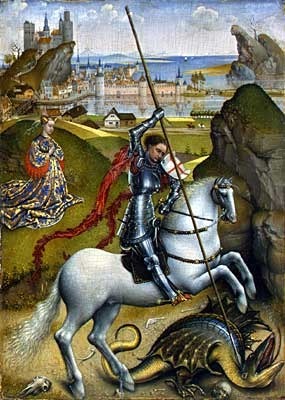
What is a semantic field? In Linguistics, a semantic field is a set of semantically related items, for example verbs of perception. That is: in the semantic field of horror, for example, you can find the following adjectives: sinister, sombre, macabre, dark, obscure, mysterious, unexplainable, frightening, scary, devious... words that you can use when you are constructing a text related to horror, to create a desired effect, like pieces in a mosaic or colours and shades in a painting. When talking about the semantic field of fairy tales, we are considering symbolically its main elements as parts of a sentence: the types of characters would be the subjects; the quests and adventures the verbs; the setting in time and space the adjuncts, the subgenre the basic structure... and the full sentence, the full message is the whole, final text. Vladimir Propp, in his work Morphology of the Folk Tale, defines these actions or quests carried out by fairy tales' protagonists as functions. And about these functions he states the following theses: 1- Functions of characters serve as stable, constant elements in a tale, independent of how and by whom they are fulfilled. They constitute the fundamental components of a tale. 2- The number of functions known to the fairy tale is limited.3- The sequence of functions is always identical.4- All fairy tales are of one type in regard to their structure.http://homes.di.unimi.it/~alberti/Mm10/doc/propp.pdfIt is impossible to classify correctly, and in clear-cut categories, the elements of fairy tales: fantasy cannot be categorised. But we can learn about some very basic elements and structures common to many fantasy works. This would help us be better able to interpret and teach the basics, and even produce fantasy works of our own, or encourage our pupils to do so.http://www.slideshare.net/taplo21/televi-state-university
aFantasy: A Basic Classification

Classification by Subgenre (Just a few of them)
These subgenres also indicate the main settings in time & space of the stories most of the time: - Contemporary fantasy is set at present times. - Cyberpunk and science fiction are set in a far future. - Gaslamp and steampunk fantasy are set in an English-like, Gothic-Victorian-Edwardian type of environment. - Detective stories are set anytime, yet they are usually inspired in British Victorian-Edwardian times after Sir Arthur Conan Doyle's works and Edgar Allan Poe's short story: "The Murders in the Rue Morgue". - Horror-mystery stories generally portray many elements from the Gothic and Romantic periods. - Most fables, fairy tales, legends and myths are set in a far past, sometimes before men walked on earth. Myths, in particular, often narrate the very creation of the world from scratch.- Heroic, high or epic fantasy are usually set in a medieval past, somewhat around King Arthur's times and the Norman Conquest of Britain. - Pirate stories are generally set in the period of colonisation of the Caribbean by the European peoples. That is, from the 16th to the 18th centuries. - Western stories are set in the early periods of colonisation of America, ranging from the 16th to the 18th centuries.- Bangsian fantasy is set in the afterlife.
Bangsian fantasy
Created after John Kendrick Bangs, who wrote a type of fantasy in which famous historical or fictional characters meet and relate in the afterlife. Bangs in particular wrote in a humoristic tone. Link to A House-Boat on the Styx by Bangs (Project Gutenberg): http://www.gutenberg.org/files/2618/2618-h/2618-h.htm
aContemporary fantasy
Subgenre of fantasy that portrays magical elements and characters but set in contemporary contexts. Good examples could be Coraline or Mirrormask, by Neil Gaiman. http://images.huffingtonpost.com/2013-09-06-6061559_orig.jpghttp://www.neilgaiman.com/works/images/MirrorMask_Hardcover_1185845534.jpg
aCyberpunk fantasy
Type of fantasy set in an imaginary, generally dystopic future overridden by information technology and ruled by artificial intelligences and cybernetics. This type of setting puts human life and customs in danger and disrupts social structures and general peace. It is different from science fiction in that it is generally dystopic. The short story collection The Martian Chronicles by Ray Bradbury could be considered an example of cyberpunk, particularly the short story "Usher II", in which the main character builds a mechanical house copying Edgar Allan Poe's Usher mansion, filled with killer automatons and seeking revenge for censoring the reading of books on earth. http://ecx.images-amazon.com/images/I/517g-PoVEtL._SY344_BO1,204,203,200_.jpg
aDetective stories
Generally, in detective stories there is a crime or mystery to be solved, and one (or several) very clever individuals who find out the truth due to the finding and interpretation of clues, rational reasoning and attentive observation. Detective stories don't usually involve fantastic or magical elements: their key feature is that through reason you can explain anything. Yet very often they show crimes that look like supernatural events on the surface. One of the first detective stories in history of Literature is "The Murders in the Rue Morgue" by Edgar Allan Poe, which inspired posterior authors such as Sir Arthur Conan Doyle or Agatha Christie. http://www.gutenberg.org/files/2147/2147-h/2147-h.htm
aFables
Fables portray stories in which animals, and sometimes other elements in nature, are given human characteristics (anthropomorphism) while preserving their basic traits like paws, beaks, talons, tails, etc. and using them as means to defend themselves or accomplish some purpose. Generally, each animal symbolises one special virtue or characteristic from human nature - the lion symbolises courage, the fox wittiness, the owl wisdom, etc. - and the stories have a moral message. Aesop's fables by Aesop are good examples of this subgenre. http://www.gutenberg.org/files/21/21-h/21-h.htm#link2H_4_0001
aFairy tales
Fairy tales per se deal with fantasy beings from the supernatural realm interacting with the human world. These beings, taken from traditional folklore, are the so-called fairies, elves, trolls, goblins, dwarves, pixies, nymphs, sprites, hobbits (created by J. R. R. Tolkien)... They are generally human-like or rather half human, half animal or natural element, and they are powerfully imbued with magic.In their interaction with humans, they can be benevolent or malevolent depending on their nature and the humans' intentions. They generally struggle to preserve nature from people's ambitious and destructive drives.Every culture in the world has its own array of fairy tales, and its own type of fantastic beings who dwell in the most inhospitable places in nature they are familiar with. Desert tales from the Arabic tradition, for example, feature djinni or genies, spirits from the desert made of smokeless, ever-scorching fire. Inuit myths from the Eskimo culture, on the other hand, feature qalupaliks: creatures similar to mermaids who live in the freezing water and steal wandering children who misbehave with their parents. One free resource: Fairy Tales Every Child Should Know, edited by Hamilton Wright Mabie (Project Gutenberg)http://www.gutenberg.org/files/14916/14916-h/14916-h.htm
aGaslamp fantasy
Type of fantasy that is very similar to steampunk fantasy, set in an imaginary British, Victorian or Edwardian-like context. Also called gaslight fantasy. Its main difference with steampunk is that it does not focus on imaginary technological advances and steam-powered devices, but it revolves around supernatural, pseudo-scientific or magical elements instead. It is considered that one of the first examples of gaslamp fantasy would be The Time Machine by H. G. Wells: http://www.gutenberg.org/ebooks/35A contemporary example of a gaslamp fantasy work could be the comic series The League of Extraordinary Gentlemen, by Alan Moore and Kevin O'Neill, which gather the popular characters from Gothic-Victorian-Edwardian fiction Mina Murray (Bram Stocker's Dracula); Campion Bond (the supposed grandfather of James Bond); Captain Nemo (Jules Verne's Twenty Thousand Leagues Under the Sea); Allan Quatermain (Rider Haggard's King Solomon's Mines); Dr Jekyll (Robert Louis Stevenson's The Strange Case of Dr. Jekyll and Mr. Hyde), and Hawley Griffin (H. G. Wells's The Invisible Man) against many other foes also taken from these books or related ones:http://pmctvline2.files.wordpress.com/2013/07/the_league_of_extraordinary_gentlemen_fox.jpg
aHeroic fantasy
Heroic fantasy is centered on the figure of a main character which portrays heroic characteristics - that is, he or she shows an unnatural strength, courage, wit and virtue, and because of that fact is capable of protecting his or her people from a great danger and evil. Sometimes, these heroes are great champions by nature, like Bewoulf from the Old English poem. But most often these characters are reluctant to accomplish such a difficult task at first (generally, they are destined to become heroes or heroines because of some prophecy, birthright, etc.) There are many examples of these "reluctant heroes", for example Frodo or Bilbo Baggins from J.R.R. Tolkien's The Hobbit or The Lord of the Rings. This theme also relies a lot on the tradition of the bildungsroman (a novel which portrays the main character's rite of passage from childhood or immaturity into adulthood and maturity) and the mythical figure of King Arthur, who eventually became king after being raised a humble squire for his foster brother. One resource: The Legends of King Arthur And His Knights by James Knowles (Project Gutenberg): http://www.gutenberg.org/files/12753/12753-h/12753-h.htm
aHigh or epic fantasy
High or epic fantasy is very similar to heroic fantasy but in a larger scale: it involves great wars and social turmoil in a whole fictional universe and not one (or several) main hero or foe as protagonists but many. Generally set in a medieval-type setting, it includes all sort of mythical characters from fairy tales and the struggles and relationships amongst them. The A Song of Ice and Fire series by George R. R. Martin (adapted as the famous TV series Game of Thrones) is a very good example of this subgenre, as well as J. R. R. Tolkien's Lord of the Rings. http://upload.wikimedia.org/wikipedia/zh/b/b5/A-song-of-ice-and-fire-books.jpg
Historical fiction
Works of historical fantasy create fiction in a specific historical setting. It is generally very well documented, and does not generally involve many magical elements (if any), so that the story is centered in presenting the chosen historical period in an attractive way yet as realistically as possible.Noah Gordon, author amongst other titles of the Cole trilogy The Physician, Shaman and Matters of Choice is one worthy novelist specialised in historical fiction; another very high-quality and renown historical novelist is Umberto Eco, with works such as The Name of the Rose and Baudolino. http://www.openroadmedia.com/Libraries/Team_Images/Gordon_Bundle_lowres.sflb.ashxhttp://library.lehigh.edu/omeka/archive/files/2f2d3ce0fb23fbe33aec35871a47b975.jpg
Horror-mystery
The subgenre of horror-mystery fantasy originates in the Gothic period and presents a blending of Gothic and Romantic elements, with Ann Radcliffe's The Mysteries of Udolpho and Horace Walpole's The Castle of Otranto as two of its first major representatives. It portrays many fantastic and supernatural elements and beings, but in their most sinister, macabre, deadly aspects: ghosts, spirits, skeletons, demons, mad science, dark crimes, the creepiest aspects from the collective subconscious or human nature, etc. Other very famous classics of this genre include Frankenstein; or, The Modern Prometheus by Mary Shelley; Dracula by Bram Stocker, The Strange Case of Dr. Jekyll and Mr. Hyde by Robert Louis Stevenson; The Picture of Dorian Gray by Oscar Wilde, and the whole of the works by Edgar Allan Poe and H. P. Lovecraft.http://www.gutenberg.org/files/3268/3268-h/3268-h.htm
aHumorous fantasy
Humourous fantasy has the creation of humour as its main purpose, regardless of any other special feature. It generally relies on irreverence, irony, social criticism and mocking or rewriting the most stereotypical characters and characteristics from fantasy works.One of the greatest authors in the subgenre of humorous fantasy is Terry Pratchett, author of the Discworld series, amongst many other works. In futuristic science fiction, The Hitchiker's Guide to the Galaxy series by Douglas Adams is also extremely famous and successful amongst readers.http://momentumbooks.com.au/wp-content/uploads/2013/08/the-first-discworld-novels-1.jpghttp://www.american-buddha.com/adams.hitchfive.cov.gif
Legends
Legends portray stories that, although mostly believed to be fictional, there is a possibility that they are based on a truth or half-truth and are still believed to be true by many people. They are generally popular and very often they become myths. Legendary stories include King Arthur's narrations or historical-mythical characters like St. George (a Christian martyr saint who historically was a Roman officer, and who later on became archetypically linked to the symbolism of St. Michael Archangel as the defender of damsels in distress and the dragon slayer) or St. Nicholas, a Christian saint who was a Bishop in Myra and who later on, after his death, evolved into the figure of Santa Claus. In Project Gutenberg there is a variety of free texts related to the Arthurian legends. You can find them here:http://www.gutenberg.org/wiki/Arthurian_Legends_%28Bookshelf%29
aMyths
Myths portray stories that have become so important for the imagery of a culture that they have become archetypical points of reference in didactic, cultural, social and traditional terms. Therefore, the main difference between myths and legends or myths and fairy tales, for example, is that myths are revered, sometimes as representations of the deeds and adventures of the very gods (mythology). Myths portray archetypes; that is, the main characters are representative of some crucial aspects or forces in human nature or in Nature itself, and they are believed to be real but in a spiritual plane, and to influence humans from there. Myths gather, for example, Greek, Roman, Egyptian, Indian, asian, African or Hispanic-Shamanic mythologies, explanations for the Creation of the World and the Universe, and a multitude of Gods and Goddesses with different attributes. In Project Gutenberg you can find many free works dealing with mythology, here you can find a link to a few of them: http://www.gutenberg.org/wiki/Mythology_%28Bookshelf%29
aPirate stories
Pirate stories center around characters and adventures inspired by the figures and deeds of the most famous pirates in Central America and the Caribbean, ranging from the 16th to the 18th centuries. Some of these fearful criminals of the sea, for example Blackbeard, Henry Morgan, William Kidd or Anne Bonny and Mary Read have become symbolic characters representing wilderness, debauchery, toughness and an outlaw lifestyle. The sunny, tropical setting of the Caribbean, together with the constant struggle to survive in the harsh ocean and evade enemies make pirates very attractive characters to create exciting adventures. Robert Louis Stevenson's The Treasure Island is one of the most representative examples of pirate fiction. Another very famous fictional character who is a pirate is Captain Hook, from J. M. Barrie's Peter Pan. http://www.gutenberg.org/files/120/120-h/120-h.htmhttp://www.gutenberg.org/files/16/16-h/16-h.htm
aScience fiction
Science fiction does not portray magic: instead, it creates a fictional future or technology based on scientific advances still unattained via our current science, and which we still don't know if they will ever be likely to attain. Examples of this type of technology could be time machines, teleporters, spaceships, automatons, and artificial intelligences of all types. Not necessarily, but very often science fiction works, apart from this kind of technology, also shows the interaction of humans with alien races and other planets. Maybe one of the most renown science fiction novelists is Isaac Asimov, author, amongst other works, of the Robot and Galactic Empire series. Another famous author is Frank Herbert, creator of the Dune saga.Here is a link to Project Gutenberg's only Asimov's short story in the Public Domain by now, "Youth":http://www.gutenberg.org/files/31547/31547-h/31547-h.htm
aSteampunk fantasy
Steampunk fantasy is a sort of blending of science fiction with the British Victorian-Edwardian-Age-of-Reason environment. Similar to gaslamp or gaslight fantasy, its main characteristic is the integration of a very powerful, fictional type of technology, mostly but not necessarily steam-powered, inspired by the scientific discoveries of the Age of Enlightenment. Jules Verne is considered the first true steampunk author in history of Literature and the main inspiration for this subgenre, with works such as From the Earth to the Moon; 20.000 Leagues Under the Sea, or Off on a Comet! a Journey through Planetary Space. Steampunk fans are thrilled by the fact that, actually, many of Verne's fantastic inventions have eventually become a reality. http://www.gutenberg.org/cache/epub/83/pg83.htmlhttp://www.gutenberg.org/files/1353/1353-h/1353-h.htm
aWestern stories
Western narratives portray stories set in the so-called "Wild West", the outlaw territory at the American frontier up to the 19th century, and also ranging from the 16th to the 18th centuries, during the progressive colonisation of the continent by the Europeans. The literature (and movies) that conform this subgenre originate in the first testimonials from the Puritans in American lands, interacting and fearing the Native Americans all the same and struggling to adapt to and survive in the new and extremely harsh environment. Therefore, Western stories' main characters are usually villains, gold-diggers, cowboys, faithless priests, can-can dancers and a varied assortment of (mostly) rascals, drunk with illegal moonshine, whose main purpose is to get rich quickly and easily and who don't abide by the law. Their precarious settlements suffer from periodic attacks by the Indians and only the sheriff struggles to keep some peace - the hard way. With time, the Indian peoples lost the negative traits they were depicted with in earlier Literature. The Last of the Mohicans by James Fenimore Cooper is a very good example of high-quality Western narrative. http://www.gutenberg.org/files/940/940-h/940-h.htm
a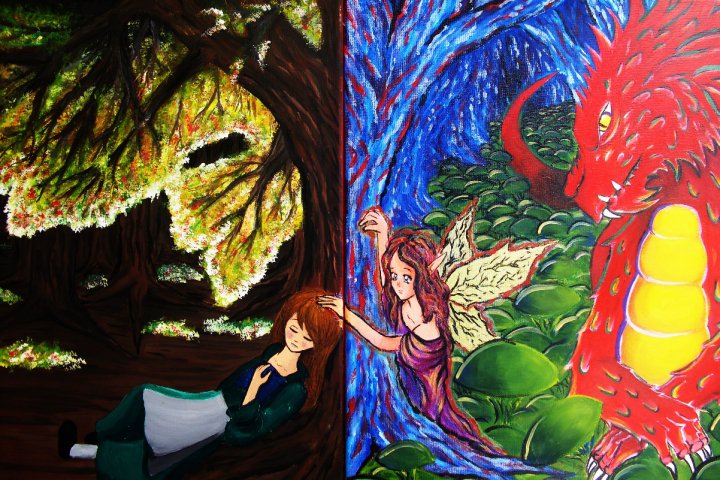
Classification by Type of Interaction between Fantasy and Reality
Farah Mendlesohn, author of Rhetorics of Fantasy, distinguishes four different types of fantasy stories depending on the interaction or relationship existing between the protagonist of the text and the fantastic environment. - Portal fantasy.- Intrusive fantasy.- Immersed fantasy.- Liminal fantasy.
"Portal-quest fantasy"
In portal-quest fantasy texts, the main character, or characters, travel magically from a realistic environment to the fantasy world via a special "portal". A good example of portal-quest story is portrayed in The Lion, the Witch, and the Wardrobe by C. S. Lewis, from The Chronicles of Narnia's saga, in which the protagonists travel to the Kingdom of Narnia by entering a magic wardrobe.
"Intrusive fantasy"
In an intrusive fantasy text, the mythical or fantasy world pushes somehow against the limits of reality, and threatens to swallow it in the process. Therefore, it must be pushed back where it belongs. An example of intrusive fantasy is Coraline, by Neil Gaiman. In it, a perfectly normal girl finds an old, little door on the wall of the new family mansion. Apparently, this door leads to nowhere, opening to a brick wall, but actually, during the night it leads to a parallel reality ruled by a sinister spider-like monster who attempts to kidnap and devour Coraline and her parents. Therefore, it is not only an example of intrusive fantasy but of portal fantasy as well.
"Immersed fantasy"
All the characters belong naturally to the fantasy world portrayed in an immersed fantasy text, but the reader. Therefore, the main characters and characteristics of the fantasy world are introduced and described gradually to the reader in such a way that he or she is capable of understanding everything without relying on any reference or explanation outside the text. J. R. R. Tolkien's The Hobbit and The Lord of the Rings are examples of immersed fantasy. Actually, the very first sentence from the former, "In a hole in the ground there lived a hobbit", has become emblematic.
"Liminal fantasy"
Liminal fantasy works portray worlds beautifully influenced by magic or the supernatural, for good or bad, but in such a natural way that the characters are not even aware of this magic operating. It is the gradual descent into horror from Edgar Allan Poe's short stories, or surrealistic events which in the end turn out to be a dream. It is a kind of magic that makes you doubt whether you just imagined everything from the start, very often highly psychological. It is, therefore, a type of magic that doesn't really defy the laws of reality. Mirrormask by Neil Gaiman is a good example of liminal fantasy: the protagonist, Helena, visits a parallel world in her dreams and lives the whole of her adventures there during her dream time.
Most Common Elements from Fairy Tales
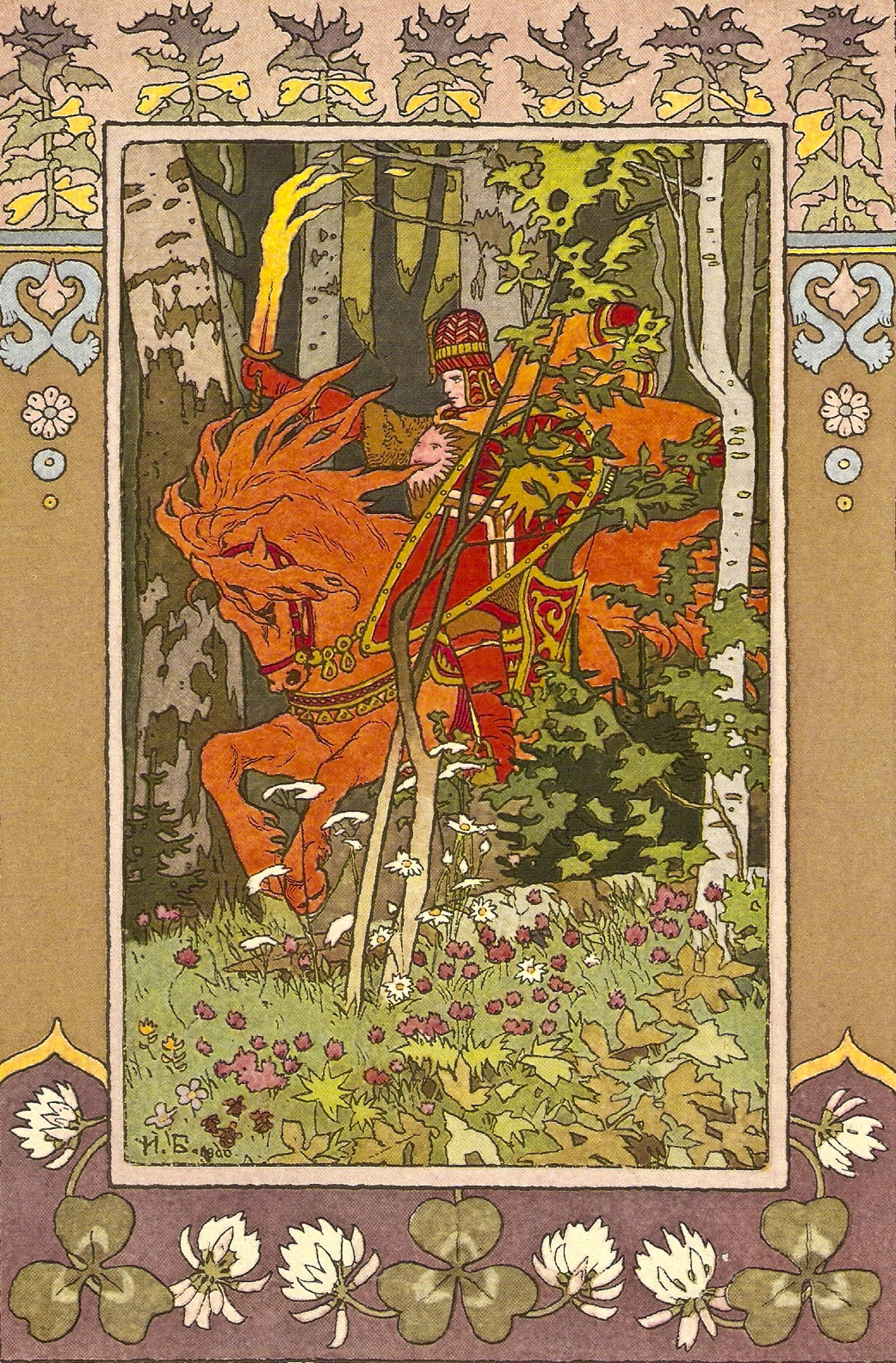
(Related basically to the medieval setting)
Settings (A Few)

Castles
In fairy tales, castles symbolise a fortress, a redux where something valuable is kept. In general, it is the hero or heroine's home from the start or becomes their home after finishing their quest. It houses the "good" characters and their allies: the King, the Queen, the Heirs to the Throne, knights and noblemen. It stands for power, organisation, reason, alliance, nobleness, values, etc. One of the best examples of civilisation, society, order and values built around a castle, court or fortress is Camelot, from the Arthurian myths. On the other hand, when the castle is not the hero or heroine's home (or ultimate goal) but the foe's, it stands for a quest or trial, mysterious and frightening, full of dungeons and perilous rooms. In these cases, the castle keeps a hidden treasure or a prisoner to be rescued - generally a princess or maiden, etc. - and to accomplish his or her goal the hero or heroine is to run through labyrinths or mazes and fight many enemies to finish the quest, defeat the foe and escape back home. An example of such a fearful abode is Bluebeard's home, from the tale "Bluebeard" by Charles Perrault.d.lib.rochester.edu/camelot/theme/camelothttp://www.gutenberg.org/files/29021/29021-h/29021-h.htm#Blue_Beard
a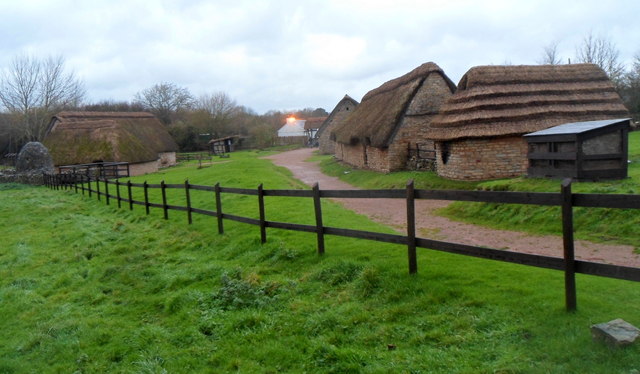
Villages
Whereas castles contain everything that stands for a noble or aristocratic lifestyle and set of values, villages or cities represent the homeplace of the common people working in the fields, as merchants or in guilds. Very often, the hero or heroine from fairy tales climbs the social ladder from a villager to a member of the upper classes due to his or her accomplishments, wit, courage and virtuosity. People from villages are usually described as extremely clever, more concerned about down-to-earth matters like economical survival and achieving a relaxed lifestyle, while the noble classes are more concerned about chivalric values and deeds. Villagers are generally penniless - and therefore, they have everything to gain and nothing to lose - more innocent, emotional and at the same time practical, spontaneous and humorous for not having been raised in the context of the strict rules of behaviour of the Court. They are also wonderful tricksters, yet (most often) for the good of all and without malice. One example: "The Puss in Boots" by Charles Perrault in Project Gutenberg:http://www.gutenberg.org/files/29021/29021-h/29021-h.htm#The_Master_Cat_or_Puss_in_Boots
a
Farms
Farms are the place where the most basic food is produced: they represent mother nature's most nurturing and friendly aspects - whereas the woods stand for wilderness and the unknown - yet not without a straining lifetime of daily toil. They are also unpredictably subject to the changes in the weather, plagues of insects and wild animals, etc. therefore, many holidays and celebrations come from the custom of praying for the gods and goddesses of the climate to be favourable. Characters from fairy tales usually have the same characteristics as villagers in general, yet they are sometimes blessed by the gods and goddesses for their hard work, goodness and devotion. One example is "The Flying Elephant", a Bhili folktale: https://www.youtube.com/watch?v=hKc4I-YxepQ
a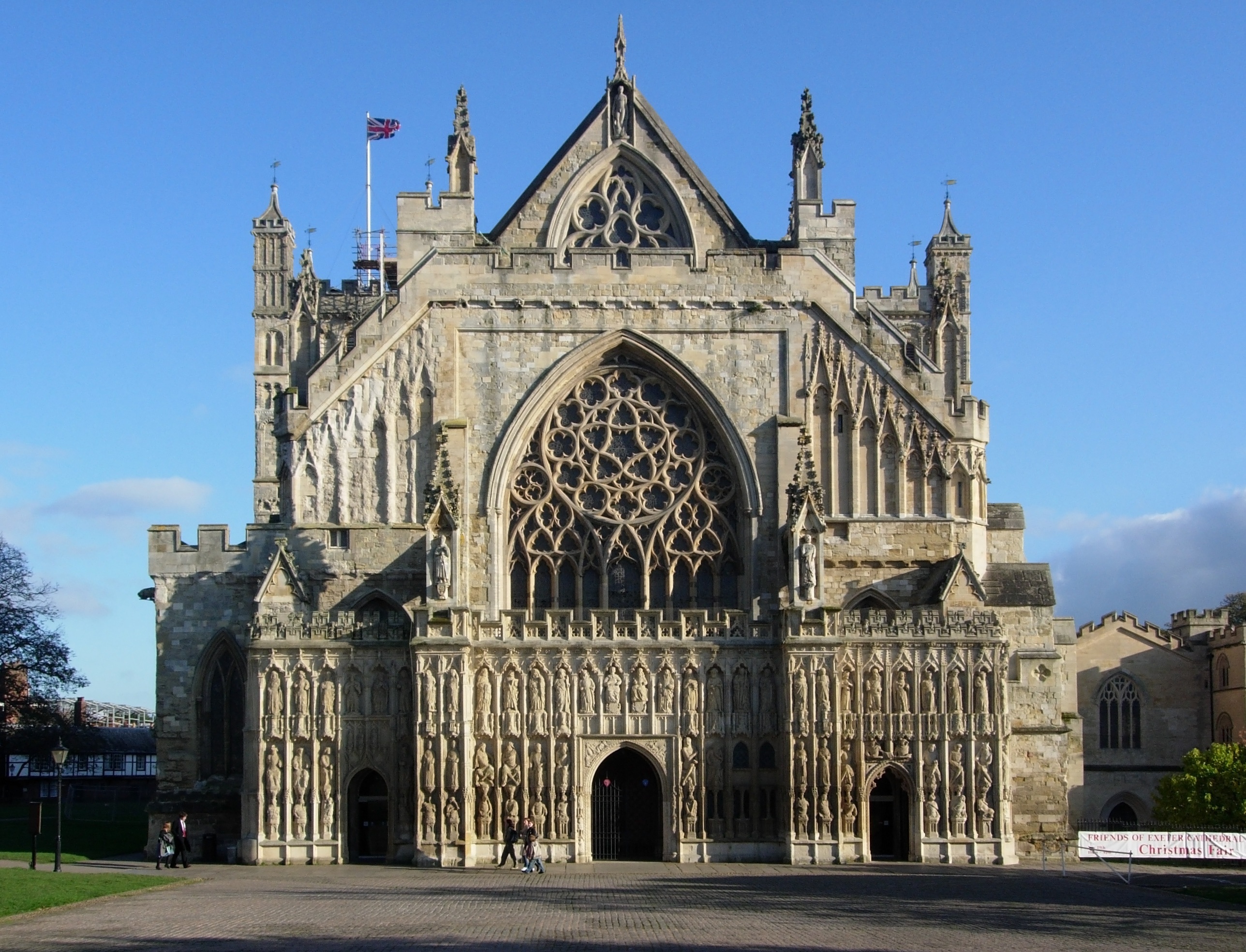
Monasteries, cathedrals
Cathedrals, monasteries and temples, in Medieval times, used to be the neuralgic centres of knowledge and culture, to the point that the first recorded narrations and theatre plays are of religious nature. Monks and priests were also historians, and they influenced powerfully even the mightiest and richest of monarchies. At the same time, they were like "stone books" for the common people: the statues of the Saints taught, via symbolic images, very important spiritual lessons. While wizards and creatures from the "perilous realms" (as J. R. R. Tolkien called them) rule magic, which is more conditional - it only blesses individuals who show a specific set of characteristics and virtues -, priests, monks, saints and angels hold the power of invoking miracles and providing unconditional protection for the soul, even redeeming evil characters if they repented from their villainies. This was true to the point that in medieval times nobody could hurt or attack anybody taking refuge in a church or temple, a privilege which was called the 'right of asylum'. Many legends about miracles concerning certain Saints or holy figures talk about the impressive miraculous powers of God and the Virgin Mary, and how important they were for the culture in which these myths originated. The legends of the miracles of St. Mungo, founder and patron saint of the city of Glasgow, Scotland, are just a few of the many examples of awesome deeds performed by medieval saints: http://www.scotsman.com/news/st-mungo-and-his-mysterious-deeds-1-466971
a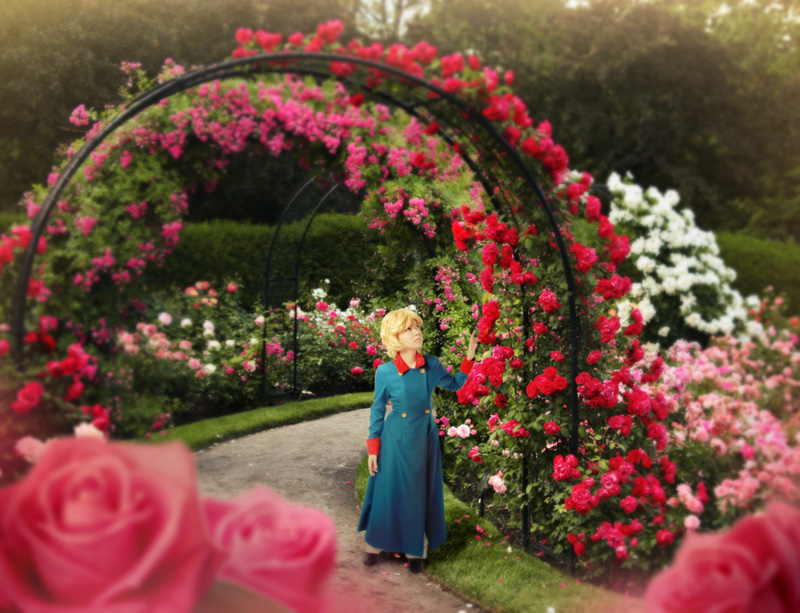
Gardens
Whereas farms represent the most nurturing and maternal yet strictest aspects of nature, and the woods the lush wilderness filled with dangerous beasts and where everything might happen, gardens stand for the most alluring, aesthetic aspect of nature: tamed, colourful and more ornamental (generally speaking) than practical, gardens are filled with flowers, aromatic herbs, birds and butterflies. It is a place of solace and leisure, tightly linked with spring, warmth, sexuality (the flower symbolism), music, creativity and romance. Symbolically, the garden represents the purest aspect of the soul and the heart. Not in vain humans lived first in the perfect Garden of Eden, before being cast away. One good example of fairy tale with a garden as main component is, by Oscar Wilde, "The Selfish Giant": http://www.gutenberg.org/dirs/etext97/hpaot10h.htm
a
Ruins
Ruins or abandoned constructions in fairy tales generally stand for decadence from a glorious past, because of moral corruption on the part of the former inhabitants of the ruined castle, palace, city or temple. In other occasions, they represent the remains of a lost culture, likely related to magic and some mysterious knowledge. Many ruins keep forgotten treasures, like in the original tale of "Aladdin and the Wonderful Lamp". Other times, they are a reflection of the enchanted owner's decay, as it is generally portrayed in the representations of the Beast's castle in the tale "The Beauty and the Beast". Finally, in some occasions they are simply the sad testimony of loss and death and extreme danger, like the Mines of Moria in The Lord of the Rings by Tolkien.Nevertheless, in most fairy stories ruins pose a challenge or a trial after which the hero or heroine finds a magnific treasure or object of value. http://www.fpx.de/fp/Disney/Tales/Aladdin.htmlhttp://www.fpx.de/fp/Disney/Tales/BeautyAndTheBeast.html
a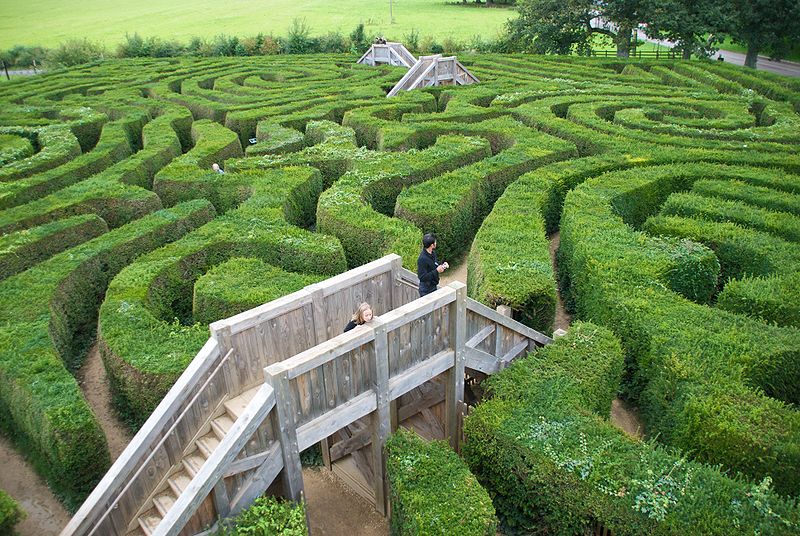
Labyrinths, mazes
Labyrinths are different from mazes in the fact that the former have only one entry and one exit, and just one possible direction. Labyrinths are not meant to be difficult to guess, but intricate and time and effort-consuming. The main strain one faces when walking a labyrinth is not knowing when it will end or whether you have changed your direction inadvertently. Mazes, on the other hand, present many different entries and exits, or at least many different turns and blind alleys. When walking a maze, one needs a map or has to guess which way one is to go to escape; therefore it is more like a puzzle. Both mazes and labyrinths may keep hidden dangers in their alleys, yet they are already quite a straining psychological challenge for the hero or heroine per se. They represent the fear of being hopelessly lost and caged, of losing your sense of direction. We can find labyrinths and mazes in the Greek myth of Theseus and the Minotaur, and one very famous movie with a labyrinth (actually a maze) as a protagonist is Labyrinth, by Jim Henson:http://www.greekmyths-greekmythology.com/myth-of-theseus-and-minotaur/https://jaysanalysis.files.wordpress.com/2010/04/david_bowie_labyrinth_jim_henson_movie_poster.jpg
a
Woods, forests
Woods and forests, in fairy tales, are the home of the wildest and most primitive beasts, supernatural beings and monsters. They represent the unexplored space in which nature is by far more powerful than man, indomitable, merciless and overpowering. During the day, forests and woods can be nice places to have a walk, but when the night falls all fears and terrors (sometimes well-founded) spring to mind. Being alone in the woods is a powerfully terrifying memory recorded in mankind's collective subconscious of being abandoned by the tribe and dying in isolation soon after.Because of the straining power nature has over the mind of man in the wilderness, many shamanic rites of passage into adulthood involve spending some time alone in the forest, surviving there on your own.A great deal of fairy tales involve incursions into forests, for example "Little Red Riding Hood", or even A Midsummer Night's Dream by Shakespeare. http://www.gutenberg.org/files/2591/2591-h/2591-h.htmhttp://www.gutenberg.org/cache/epub/2242/pg2242.html
a
Mountains
Mountains, in fairy tales, speak of might, old age and enormity. Because of that, they are very often the home of fearful and powerful giants, as well as of the smaller but tough dwarves and gnomes devoted to mining and accumulating riches. Mountains usually hide treasures, precious stones and magical items. One of the best examples of spirits of the mountains in fairy tales is the character of Rübezahl, from German and Czech fairy tales. http://www.readbookonline.net/readOnLine/4834/Symbolically, mountains also represent ascension, very often spiritually speaking (most anchorites choose the tops of mountains to retire and meditate, and also many monasteries are built there), but also as regards climbing the social ladder, like in the Swedish folktale "The Princess and the Glass Mountain":http://www.worldoftales.com/European_folktales/Swedish_folktale_16.html
aCoasts, seas, oceans
Coastes are generally related to danger when related to the fear of maritime invasions, as well as of adventures and coming of age: entering the unknown as if the lawless sea, free from any established social bonds, could change who you are into who you want to become - but not without effort. Like in the process of becoming a knight (or king) starting as a squire, many pirate stories start with the hero as a mere cabin boy ending up as the captain of the ship. One good example of pirate story is The Treasure Island, by Robert Louis Stevenson. http://www.gutenberg.org/files/120/120-h/120-h.htmAs it happens with tales from the Wild West, most typical pirate stories are quite coarse and not appropriate for teaching them without an adaptation, and even less at a young age. On the other hand, the sea, the ocean, and water places in general (fountains, rivers, lakes) host many mythical creatures such as mermaids, selkies (mythical human-like creatures of Scottish origin who turn into seals when divint into the water), ondines and water sprites in general, as well as many types of sea monsters. A very famous example is the Lady of the Lake, from the Arthurian's myths.One of the most typical examples of fairy tales related to the sea is "The Little Mermaid", by Hans Christian Andersen: http://www.gutenberg.org/files/32572/32572-h/32572-h.htm
a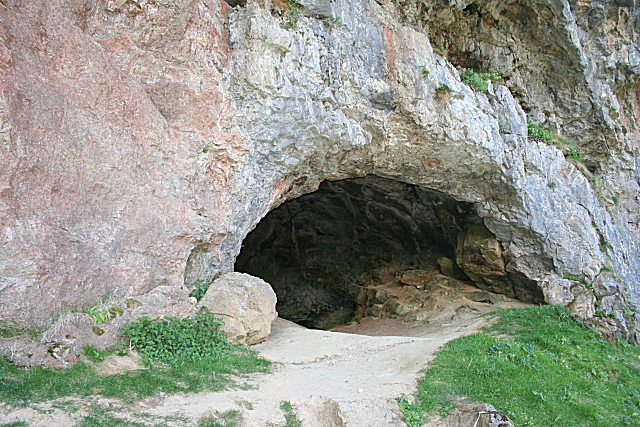
Caves
Caves are the favourite hideouts of all sorts of wild, dangerous creatures: dragons, giants, chimeras, and monsters of all types and nature. They can also be real animals, like bears or wolves, or even bandits or pirates. Caves symbolise earthly protection, but while castles and palaces ar comfortable, caves are the natural shelters provided by mother nature: bare, dark, moist, filled with echoes and yet warm and safeguarding. In many cases, after defeating the dangerous beasts or men living in the cave the hero or heroine finds a very valuable treasure or magical item in its depths, and this is a symbol of the fact that if the hero or heroine is able to endure the most instinctive in themselves - which caves symbolise - it becomes a force that empowers them. One of the most famous examples of fairy tales in which a cave plays a very important role is "Ali Baba, or the Forty Thieves", by an unknown author:http://www.gutenberg.org/files/37679/37679-h/37679-h.htm
a
Islands
Islands symbolise precisely that: isolation. More visible than caves but hard to find in the midst of the wide ocean, they are also perfect places for hiding treasures or finding shelter, above all in tales about pirates and sailors. They are very often imbued with paradisiac and magical characteristics, because of how easily it is to preserve the flora and fauna or a culture within their borders. Nowadays, this doesn't happen anymore, but in the past islands were always a little behind the times, and as many people have a natural tendency to be melancholic and miss an easier, less frenetic past, islands tend to represent precious refuges for many nostalgic refugees. It is because of this idea of nostalgia and preservation of the values of a better past that King Arthur is, according to the legend, waiting patiently in the Isle of Avalon (according to some scholars, it is actually the Isle of Glastonbury), from where he is to return when some danger menaces Britain again. On the other hand, this idea of the seductive and the paradisiac yet profoundly isolating of islands is reflected in the myth of Odysseus and Calypso:http://alandofmythandatimeofmagic.weebly.com/avalon.htmlhttp://www.greekmyths-greekmythology.com/calypso-odysseus-greek-myth/
a
Deserts, oases
Deserts are considered by many the ultimate spiritual places on earth. This is because in deserts there is an utter lack of stimuli as compared with other landscapes: just sand, rocks, the sky, and the horizon, at least in "the big picture"; and they seem to go on and on forever. Like in the middle of the sea, in the desert time and space don't seem to matter at all: there is only the present, and the different degrees between day and night. But whereas the sea is more dynamic, led by oceanic currents and highly susceptible to the changes in the weather, the desert is wonderfully static - provided that you don't encounter a sand storm, of course. Even camels, the most suitable animals to travel with throughout deserts, follow a silent, hypnotically constant pace. With time, the eye learns to perceive the differences in the rocks and in the types of sand, and becomes suddenly aware that deserts are not empty at all and that indeed host many types of wildlife. This sudden change or perception becomes a very alluring sense of oneness and consciousness. Deserts are mesmerising and full of mirages caused by the reflection of the sunlight on the warmest air layers, which are those nearest to the ground. Because of that, humans who live in or visit a desert are frequently tricked by these phenomena into believing there is water on the ground. At the same time, deserts humble humans bidding them to endure extreme heat during the day and cold in the nights, and teach them that unless they stay together they are not going to survive: the desert is not a place for reivindicating your sense of individualism: one will only survive if one is accompanied by someone who knows where to find the next oasis.All these characteristics make a visit to the desert a deeply transformational experience. That's why it is the preferred place for shamans to live and learn their arts and for many monks and priests to undergo their meditations and look for God. Sufi tales are almost always deeply symbolic and spiritual, and, from the early years of Christianity, famous are the texts left by the so-called "Fathers of the Desert". Here are two examples of both of them: http://www.spiritual-short-stories.com/spiritual-short-story-66-The+Tales+of+the+Sands.htmlhttp://christdesert.org/Seeking_God/Stories_from_the_Desert_Fathers/The_Young_Emperor/index.html
aCharacters from Fairy Tales (Just A Few of Them)
The "Goodies" (A Few)
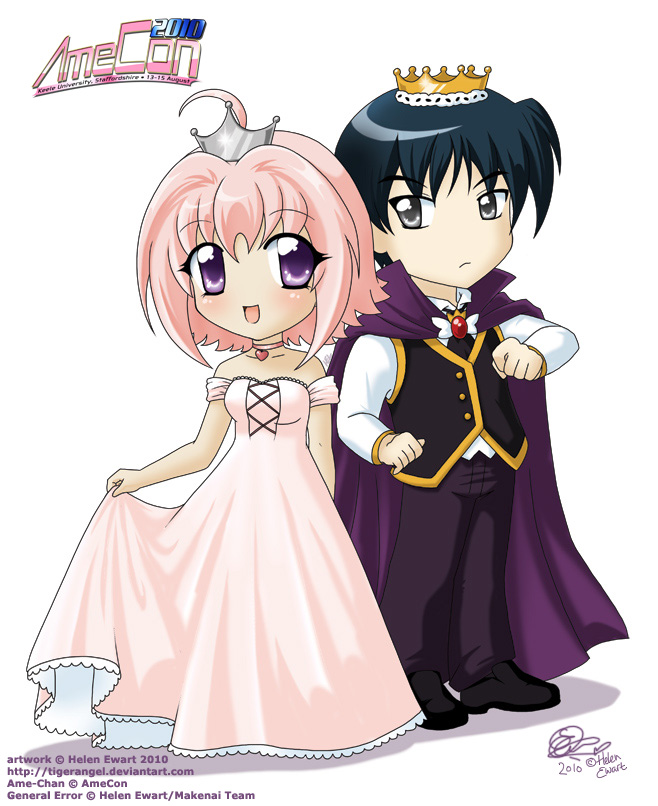
The King and Queen
Primary emotions/characteristics: nobility, weakness, chivalry, constraint.Kings and queens in fairy tales represent the maximum authority and order. While magical characters hold the power of nature, and celestial ones the power of Good and Evil depending on their nature, the monarchs hold the power of managing people. Therefore, they represent humanity, and as such they suffer from many human flaws: they are vain and ambitious or maybe oblivious and helpless when facing some serious challenge, and to save their reign they invariably need the help of the hero or heroine, who is able to combine humanity with a deeper knowledge (in the language of fairy tales: a knowledge about magic) through the accomplishment of the given quests. Even King Arthur was betrayed by his wife Guinevere, or supposed to have been, showing that even the mightiest and most virtuous of kings and queens are susceptible to be troubled by human affairs like any other person. http://www.mainlesson.com/display.php?author=warren&book=arthur&story=princess
a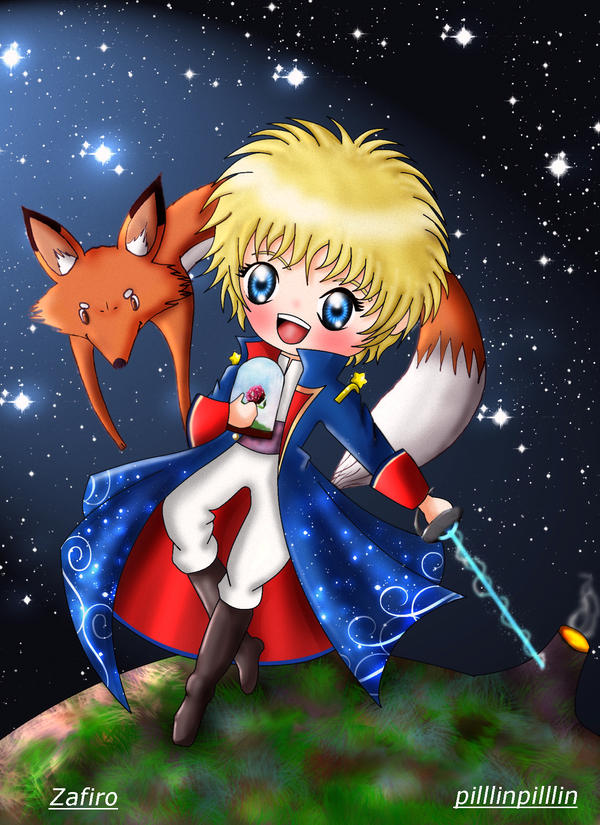
The Prince
Primary emotions/characteristics: nobility, innocence, courage, resourcefulness, obedience, romance.The prince is the main hero in a great deal of fairy tales. The heir to the throne, and born from flawed parents because of their human quality, he is still young, virtuous, brave and innocent enough to make an effort and put right by himself what his parents couldn't. In some occasions, he is to compete with envious rivals, maybe his brothers (a repetitive pattern in fairy tales is that the main hero is the third and youngest of three brothers or sisters). In some occasions, the prince loses his prestige because of an evil hidden within the family, and as a consequence of that he is to acquire a humble lifestyle for a while. One example of such a character is the protagonist from the Swedish tale "The Princess and the Glass Mountain":http://www.worldoftales.com/European_folktales/Swedish_folktale_16.html
a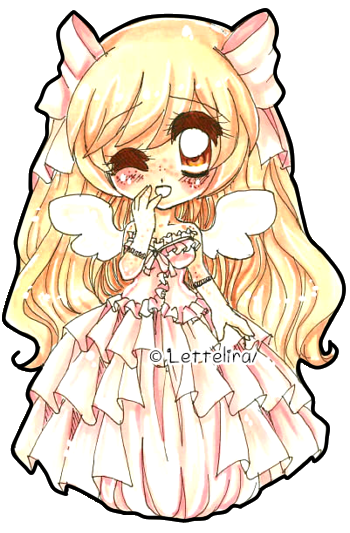
The Princess
Primary emotions/characteristics: nobility, passivity, beauty, modesty, gentleness, obedience, chastity.Most often, the princess in fairy tales is a young and virtuous beauté whose destiny is to become the prize for the hero after he rescues her from some evil or undergoes and accomplishes a series of quests, becoming thus the heir to the in-laws throne. But there are outstanding exceptions in which she is to become the heroine herself, like in the Greek myth of Eros and Psyche. In it, Psyche, the youngest of three princesses, triggers, because of her awesome beauty, the jelaousy of goddess Aphrodite, who sends her son Cupid to finish her. Instead of doing so, Cupid falls madly in love with Psyche. Knowing that he is disobeying his mighty mother, Cupid steals Psyche into a secret palace commanding her never to stare at him. Tricked into believing that her husband is indeed a monster, Psyche obeys at first, yet ill-advised by her sisters one day she stares at him in his sleep, and realises he is Eros. The spell broken, he flees from her, and she is to undergo a series of trials to recover her lost love and appease her jealous mother-in-law, even visiting Hell.http://webspace.ship.edu/cgboer/psyche.html
a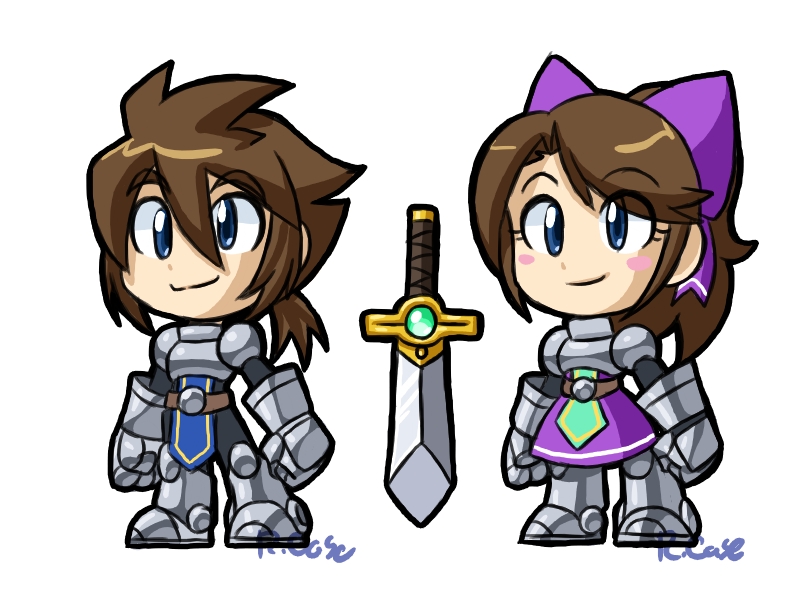
The Knight
Primary emotions/characteristics: nobility, strength, chivalry, loyalty, obedience, sacrifice, friendship, endurance.When the hero is not a prince, very often the main character from a fairy tale is a valiant knight. With so many myths coming from the Arthurian legends, the texts by Chrétien de Troyes, and the more recent influence of the writings by J. R. R. Tolkien, the figure of the knight, be him a swordsman, a ranger or any other type of warrior, keeps on being of utmost relevance in both classical and modern fairy tales. Very often, the knight is the intermediate state between the clever but humble boy in his ascension to the role of king; and, if not, knights represent loyalty, values and friendship amongst themselves and obedience to the monarchs. In medieval society, no one was truly free, and even less the upper you were born in the social ladder: knights must obey the kings, and kings must abide by the knightly values of chivalry. Thus, knights are the representatives of the king as if they were his very arms, and they must yield their lives to protect him. In many occasions, they save him from some danger sacrificing themselves instead. The myths about the Round Table knights from the Arthurian legends are very famous, like the English poem The Wedding of Sir Gawain and Dame Ragnelle, from which here you can find a retelling of the story:http://www.storiestogrowby.com/stories/gawain_rag_body.html
a
The Granny
Primary emotions/characteristics: maternal drive, wittiness, humour, wisdom, protection, nourishment, healing, resourcefulness.In fairy tales, grandmothers represent all the nurturing aspects of the archetype of the mother, yet far wiser, self-confident and resourceful due to experience and old age. In these particular cases, they need not necessarily be the true grandmothers of the hero or heroine but a wise old woman he or she encounters along the way, and who helps him or her with advice or some magical item. These old, wise women, ugly crones of disgusting appearance and disturbing powers yet more active and bright than the younger protagonists, are the human female counterpart of wizards, while fairies and angels could be considered their supernatural or celestial counterparts. An example of this type of character is Strega Nona, a book written by Tomie dePaola:https://www.youtube.com/watch?v=ULUG8IIo9-8Nevertheless, in some exceptional cases the grandmother is but a defenceless woman in distress, crippled by old age, like in "Little Red Riding Hood" by the Brothers Grimm. In these particular cases, the grandmother is to be rescued by a man able to finish with the evil that menaces her and the rest of the characters. http://www.eastoftheweb.com/short-stories/UBooks/LittRed.shtml
athe Wizard
Primary emotions/characteristics: mysticism, intelligence, mind power, strong-willed, studiousness, self-command, sometimes chaste and sometimes filled with human flaws and drives.Wizards in fairy tales are very powerful characters, for with their magic they can change the destiny of kings and queens, and therefore of whole kingdoms and nations. Very often, they are benevolent to the hero or heroine, but they can also be foes or rivals if they are of evil nature. Nevertheless, in spite of their power, like the figures of the king and queen wizards are humans, and therefore flawed. Even the mighty Merlin from the Arthurian legends falls into disgrace for the sake of a woman, Vivien, and all his magic proves powerless in front of his relentless longing for her: https://sites.google.com/site/arthurianlegend20/the-passing-of-merlinWhile grannies and old wise women very maternally use their knowledge and magic to preserve people's health and well-being, wizards in fairy tales very often engage in wars and are more concerned with more stand-offish accomplishments such as controlling the weather, slaying evil beings, invoking spirits or morphing reality in some way or another. Merlin himself morphed King Arthur's father in the moment of his conception. One of the most famous examples of warrior wizards in the history of literature is Gandalf, from Tolkien's The Hobbit and The Lord of the Rings.
a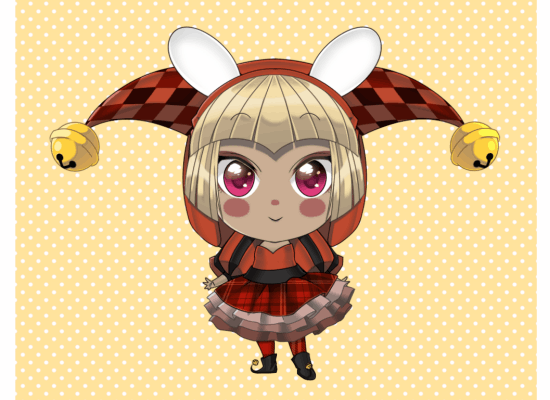
The Jester
Primary emotions/characteristics: humour, merriment, art, audacity, self-expression, socially skilled, emotional, theatrical, histrionic, attention-seeking, playfulness, deceitfulness.Jesters are the king and queen's buffoons, entertainers and counsellors. Playful and skilled in the arts of singing, dancing and merriment in general, while everybody is to behave with the proper deference in front of the highest members of the Court, jesters are free to tell them the bare truths via jokes, ironies and sarcasm. Dispensed with the chivalric duties of buttering-up the monarchs, jesters constitute in many occasions better advisers than those truly exerting that profession. On the negative side, however, they can also become tricksters, or very manipulative and nasty betrayers. The name of King Arthur's jester in Camelot is Sir Dagonet: http://www.earlybritishkingdoms.com/bios/dagonet.htmlhttp://dimdima.com/khazana/Complete_story/completed_stories.asp?q_sid=114&q_title=The+King+and+the+Jester
a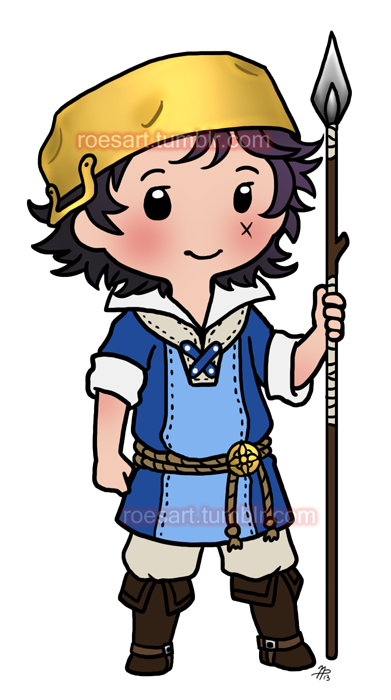
The Clever Boy
Primary emotions/characteristics: spontaneity, innocence, courage, loyalty, uncomplaining, hard-worker, gratefulness, resourcefulness.In many cases, the hero from a fairy tale is not a prince or a nobleman but a common villager, merchant or farmer, in most cases very poor, who climbs the social ladder until he becomes a knight or even king. These heroes are very clever, because necessity encourages wit and intrepidity for the sake of survival. While princes and knights are driven by their chivalric values and moral virtuosity, characters of humble origin are led by a sense of pragmatism: They are more emotional and instinctive, and generally more resourceful as well, because of a history of getting by. Used to daily toil yet with the advantage of freedom from all social constraints, these characters are usually brighter and far more spontaneous and humorous than their noble counterparts. A good example of this type of protagonist in a fairy tale is " Valiant Little Tailor" by the Brothers Grimm:http://www.gutenberg.org/files/2591/2591-h/2591-h.htm#link2H_4_0019
aThe Clever Girl
Primary emotions/characteristics: maternal, protective, sacrificial, modest, chastity, gentleness, tenderness, passivity, obedience, loyalty to the family. Clever girls, the feminine counterparts of clever boys, are slightly different from them in the fact that instead of seeking to climb the social ladder until eventually becoming wealthy men, they are more concerned about taking care of their families. Beautiful, modest and virtuous like the princesses, heroines from humble origins are witty, patient, emotional and very sacrificial for the sake of their families. One example is Beauty, from the fairy tale by Jeanne-Marie LePrince de Beaumont Beauty and the Beast: a young girl who voluntarily goes to the monstruous Beast's castle because her father has promised him so, and she is not willing to betray his given word. http://www.gutenberg.org/files/7074/7074-h/7074-h.htmOne of the most interesting fairy tales in which the heroine is a very clever girl is "Vasilissa the Fair", from Russian folklore. In it, the extremely beautiful Vasilissa loses her mother at the age of eight years old, and her evil stepmother sends her to the hut of Baba Yaga, a most powerful sorceress, to get rid of her. Instead of being devoured or petrified by the witch, Vasilissa is sheltered in her hut, and undergoes all the necessary trials to finally escape home, carrying a glowing skull with her, which burns her stepmother and stepsisters to cinders as soon as its strange light falls over their bodies.http://www.gutenberg.org/files/22373/22373-h/22373-h.htm#Page_158
aThe "Baddies" (A Few)
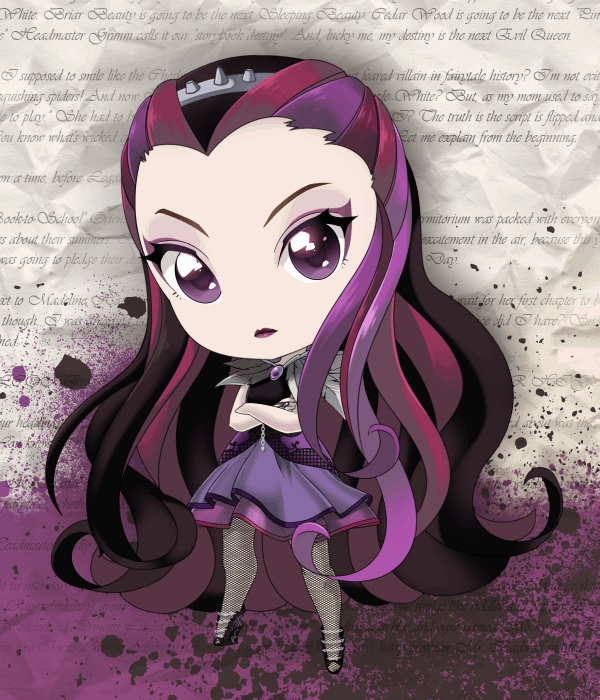
The Evil Queen
Primary emotions/characteristics: ambition, greed, cruelty, vanity, lust, seduction, manipulation, hypocrisy, jealousy, envy, passivity-aggressivity, tyranny.Evil queens are very common characters in fairy tales, whereas there are not as many evil kings. They generally substitute a deceased queen who unfortunately died during delivery. Evil queens represent all the negative characteristics from the feminine: pride, vanity, jealousy, envy, greed, hypocrisy, cruelty. They lack any maternal values, and are also in a power position, which makes them even more dangerous. Evil queens are usually also stepmothers and cannot wait to get rid of her husband's sons or daughters with his previous wife, and don't hesitate to command some assassin to pursue and kill them. One of the most famous evil queens in fairy tales is Snow-White's stepmother, in "Little Snow-White":http://www.gutenberg.org/files/20748/20748-h/20748-h.htm#snow
a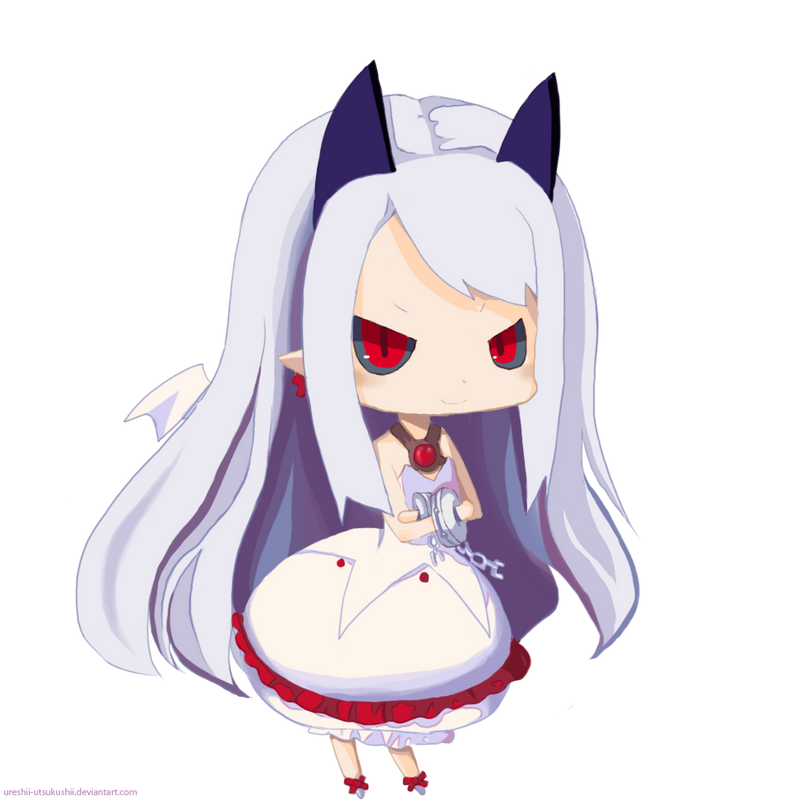
The Stepmother
Primary emotions/characteristics: ambition, greed, cruelty, vanity, lust, seduction, manipulation, hypocrisy, jealousy, envy, passivity-aggressivity, tyranny.Evil stepmothers basically mirror evil queens in every aspect, but whereas the latter ones have power over a whole reign, stepmothers focus on creating a bad environment in the more restrictive context of their own household. Again parallelly, stepmothers usually enter a family after the death at childbirth of the hero or heroine's legitimate mother, and cannot wait to dispose of them with one excuse or another. Unlike "Vasilissa the Fair", in "Cinderella: Or, The Little Glass Slipper" the stepmother doesn't want to kill her stepdaughter but forces her to do all the housework, and prevents her from living her own life. http://www.gutenberg.org/files/23303/23303-h/23303-h.htm
aThe Stepbrothers/Stepsisters
Primary emotions/characteristics: ambition, greed, cruelty, vanity, lust, seduction, manipulation, hypocrisy, jealousy, envy, passivity-aggressivity, tyranny, subordination to the parent's commands, ressentment.Evil stepbrothers and stepsisters (or legitimate brothers and sisters) usually act as a faithful reflection of all the negative traits of the evil stepmother. They are far less skilled and virtuous than the hero or heroine, and therefore less favoured by destiny. They usually resent the power the evil stepmother holds over them. Sometimes they act as if they were concerned about the hero or heroine, but this is in fact a stratagem to betray them, replace them, steal their belongings or cause them some type of prejudice. In the case of "Cinderella", the stepsisters try in vain to replace her during the glass slipper test, and in The Beauty and The Beast Beauty's sisters coerce her into staying with them longer than she has promised Beast to do, in hopes that he gets furious and devours her. http://www.gutenberg.org/files/23303/23303-h/23303-h.htmhttp://www.pitt.edu/~dash/beauty.html
a
The Sorcerer
Primary emotions/characteristics: ambition, greed, cruelty, lust, manipulation, aggressivity, deviousness, tyranny, megalomanySorcerers are the evil counterparts of wizards. But they can also be just dangerous men with some magical trait, hiding a dark secret, like Blue Beard, from the tale of the same name by Charles Perrault. Whereas wizards fight for the benefit of all (even though they might make mistakes), sorcerers are destructive in nature and use their dark arts to gather more and more power. The evil counterpart of the character of Merlin in the Arthurian legends is not a man but a woman: the sorceress Morgan Le Faye, Arthur's half-sister, as well as Lady Vivien, who eventually causes his fall. Gandalf's evil counterpart in The Lord of the Rings is the corrupt archmage Saruman.http://www.kingarthursknights.com/others/morganlefay.asphttp://www.lib.rochester.edu/camelot/MVessay.htmhttp://www.gutenberg.org/files/29021/29021-h/29021-h.htm#Blue_Beard
a
The Witch
Primary emotions/characteristics: freedom, spontaneity, ambivalence, bright, instinctive, emotional, hormonal, mastery of the dark arts, wisdom, manipulation, threatening, powerful, wild and ferocious.Many witches appear in fairy tales, portrayed at times as evil and at other times as a contradictory "necessary evil". Snow-White's stepmother, for example, as well as being the evil queen she is also a sorceress who owns a magical mirror and laces with poison the apple for Snow-White. Probably one of the greatest and most alluring witches that one can find in fairy tales is Baba Yaga. This stupendous, deformed-looking crone of Russian origin flies around in a mortar while wielding a pestle, and her house is a hut completely made of human bones and standing on living chicken legs. Her nose, with which she smells the "scent of Russian flesh" is so long it gets to the ceiling, and she is generally so funnily repulsive that one cannot but take a liking to her character. Living alone in the forest, fond of eating and petrifying people, she is wild and ferocious, capable of either helping the main character or hindering him or her, depending on her whims. In "Vasalissa the Fair", young Vasalissa is forced to live with Baba Yaga and carry out all sorts of impossible chores until she finally manages to escape. But when she does, it is with a weapon that would help her regain her power over the menace of her evil stepmother and stepsisters. In spite of her fabulous ferocity, Baba Yaga often acts as a very wise and protective grandmother, like an extremely powerful, relentless, shamanic and feminine force streaming from the subconscious.http://www.gutenberg.org/files/20748/20748-h/20748-h.htm
a
The Bandit
Primary emotions/characteristics: threatening, menacing, ambitious, instinctive, treachery, debauchery, lustful, greedy, wild, courageous, humorous, envious, inaccessible.The bandit, thief or pirate is sometimes portrayed as a positive and sometimes as a negative character: depending of whether he is favourable to the hero or heroine or not. And in the former case, he is only favourable to a certain point. Outlaw characters are charismatic in the sense that they are instinctive, authentic and spontaneous, and very often add some humour to the story. Nevertheless, if favourable to the hero or heroine, they are always ambivalent and unpredictable. In any case, they awaken a sense of fascination in the audience. In "Ali Baba; Or, The Forty Thieves" the main character, a merchant, finds a way of disposing of forty thieves hiding in a cave and keeping all their treasure. Robert Louis Stevenson's Long John Silver, from The Treasure Island, with his wooden leg and stormy, animal nature, has become archetypical. Another very famous, more positive character who becomes a thief and a bandit (and is the protagonist of the story) is Robin Hood, from The Merry Adventures of Robin Hood, by Howard Pyle:http://www.gutenberg.org/files/120/120-h/120-h.htmhttp://www.gutenberg.org/files/37679/37679-h/37679-h.htmhttp://www.gutenberg.org/files/964/964-h/964-h.htm
a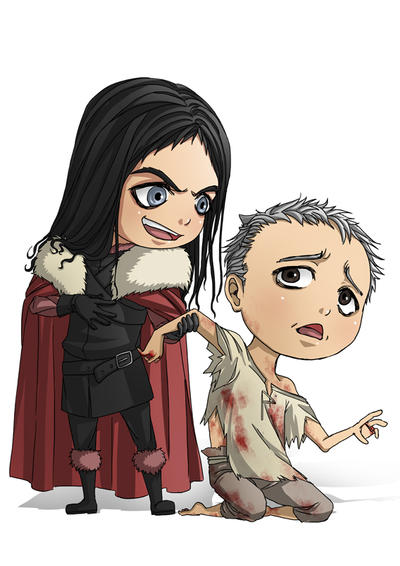
The Betrayer
Primary emotions/characteristics: Falseness, hypocrisy, two-facedness, shameless.The betrayer, represented by maybe a rival, a brother or sister, is one character who was apparently favourable to the hero or heroine at first, but then tries to prejudice the protagonist in some way, by stealing their accomplishments or selling them to their foes. Therefore, their main characteristic is falseness. the betrayer corresponds to Vladimir Propp's figure of the false hero. Every character in fairy tales who pretends to care about the hero or heroine but actually seeks their demise, like evil stepmothers, stepbrothers and stepsisters, are betrayers. Another very clear example is Edmund Pevensie, a betrayer who later redeems himself, from The Lion, The Witch and The Wardrobe, by C. S. Lewis:http://www.shmoop.com/lion-witch-wardrobe/edmund-pevensie.html
a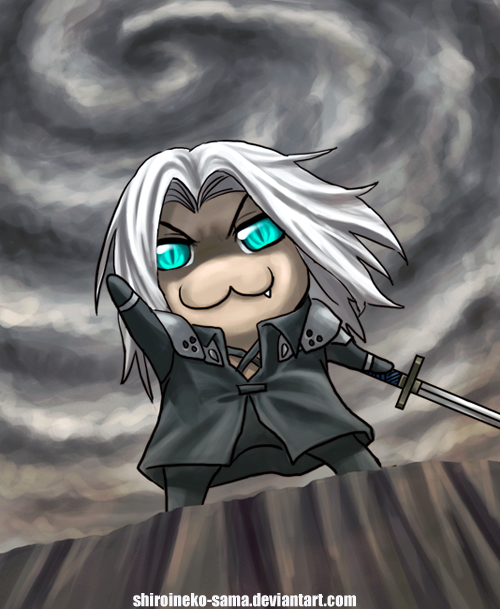
The Rival
Primary emotions/characteristics: rivalry, ambition, threatening, menacing, annoying, troublesome.The hero or heroine's rival, the evil counterpart or doppelganger, is the main opponent or villain he or she encounters during his or her quests. Once again, he or she shows all the negative aspects from the positive virtues the heroes have: falseness, ambition, cruelty, plotting, lack of self-control and criteria. Together, both the hero and the rival establish a balance between good and evil. One example of this polarity can be found again in The Lion, The Witch and The Wardrobe, by C. S. Lewis, in the characters of Jadis, the White Witch, and Aslan. Another example of strong contrast or polarity among rivals can be found in Mark Twain's The Prince and the Pauper, in which two young boys, upon seeing that they look almost identical, and being one a prince and the other a pauper, exchange roles to experience their different ways of life, but resulting in conflict when the pauper boy is not willing to abandon the throne:http://www.huffingtonpost.com/mark-nepo/aslan-and-the-white-witch_b_5977942.htmlhttp://americanliterature.com/author/mark-twain/book/the-prince-and-the-pauper/summary
aMythical creatures (A Few)
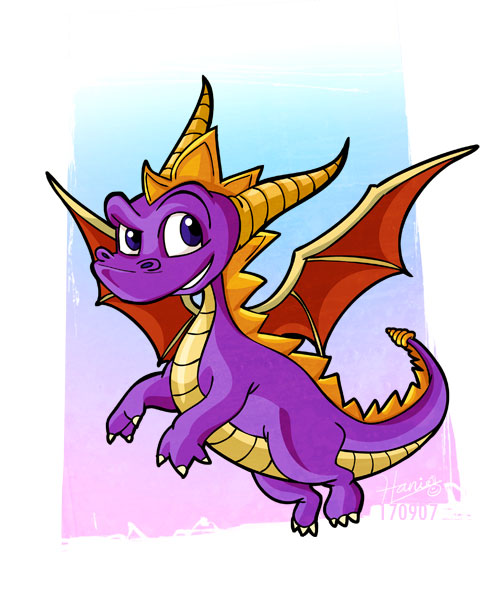
Dragons
Dragons are one of the most common mythical creatures appearing in fairy tales, perhaps because of the medieval tradition of the brave knights slaying dragons and rescuing damsels - a tradition linked to the figures of St. George or the Archangel St. Michael. They typically look like huge reptilian beings which can fly and spit fire, very protective of their eggs and offspring. In classical narrations, dragons are invariably evil, dangerous and destructive beasts which were to be slayed. Nowadays, because of the fascination they awaken in children and in adult audiences alike, dragons can be either good or bad, with a powerful turn towards the good. In The Hobbit, by J. R. R. Tolkien, the recent concept is born that they enjoy sleeping over large amounts of gold and treasure. http://www.smithsonianmag.com/science-nature/where-did-dragons-come-from-23969126/?no-ist
aUnicorns
Unicorns are horses that feature a large horn in the middle of their forehead. While nowadays they are more related to a sense of 'cuteness' and little girls are very fond of them, unicorns, in medieval myths, were not to be messed around: they slayed everybody who came near them by stabbing them with their horns, and only a pure virgin maiden could approach them. Very often, in modern fairy tales unicorns are also winged, like pegasi. In medieval times, unicorns were believed to be real and sought after a lot, for the horn was thought to have a lot of magical properties. Narwhals, which have a long, twisted horn on their forehead, could have been the origin of the myth. http://www.gods-and-monsters.com/unicorn-myths.html
a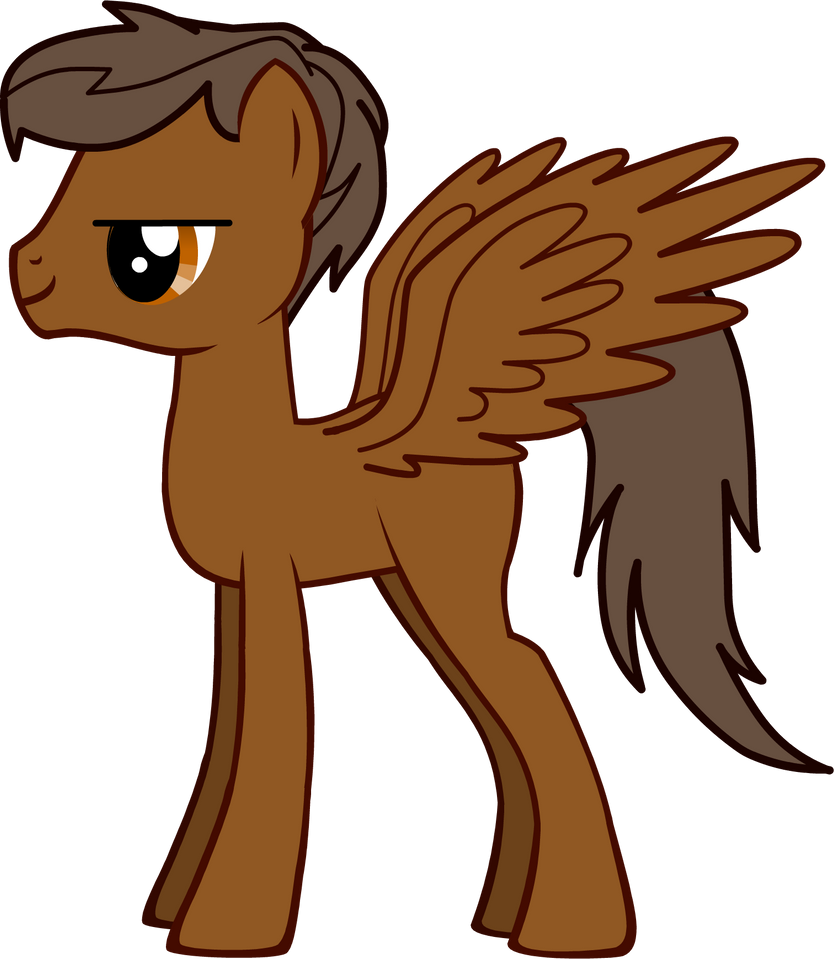
Pegasi
Pegasi (the plural of Pegasus) are winged horses. The original myth says that Pegasus was a creature born from the blood of Medusa when Perseus beheaded her. In more modern fantasy art, pegasi are also depicted with a horn on their forehead, as if they had become hybrids with unicorns. Being a winged horse, they represent the ultimate symbol of power for a knight or warrior: this is not a common stallion, it is a divine stallion which can fly. Because of that, heroes like Bellerophon wanted badly to capture him. In the original myth, Pegasus served Zeus and the Gods, and eventually became a constellation of the same name.http://www.windows2universe.org/mythology/pegasus.html
a
Griffins
Griffins, or gryphons, are creatures half eagle, half lion. Classical legends said that they guarded a lot of gold in northern lands, and were supposed to be the creatures which pulled Apollo's sun chariot. They symbolise wisdom, power and strength in times of war, because of the combination of the values of two very powerful animals. Griffins are the symbol of the house of Harry Potter, Gryffindor, in the popular Harry Potter's saga by J. K. Rowling.http://www.gods-and-monsters.com/mythology-griffin.html
a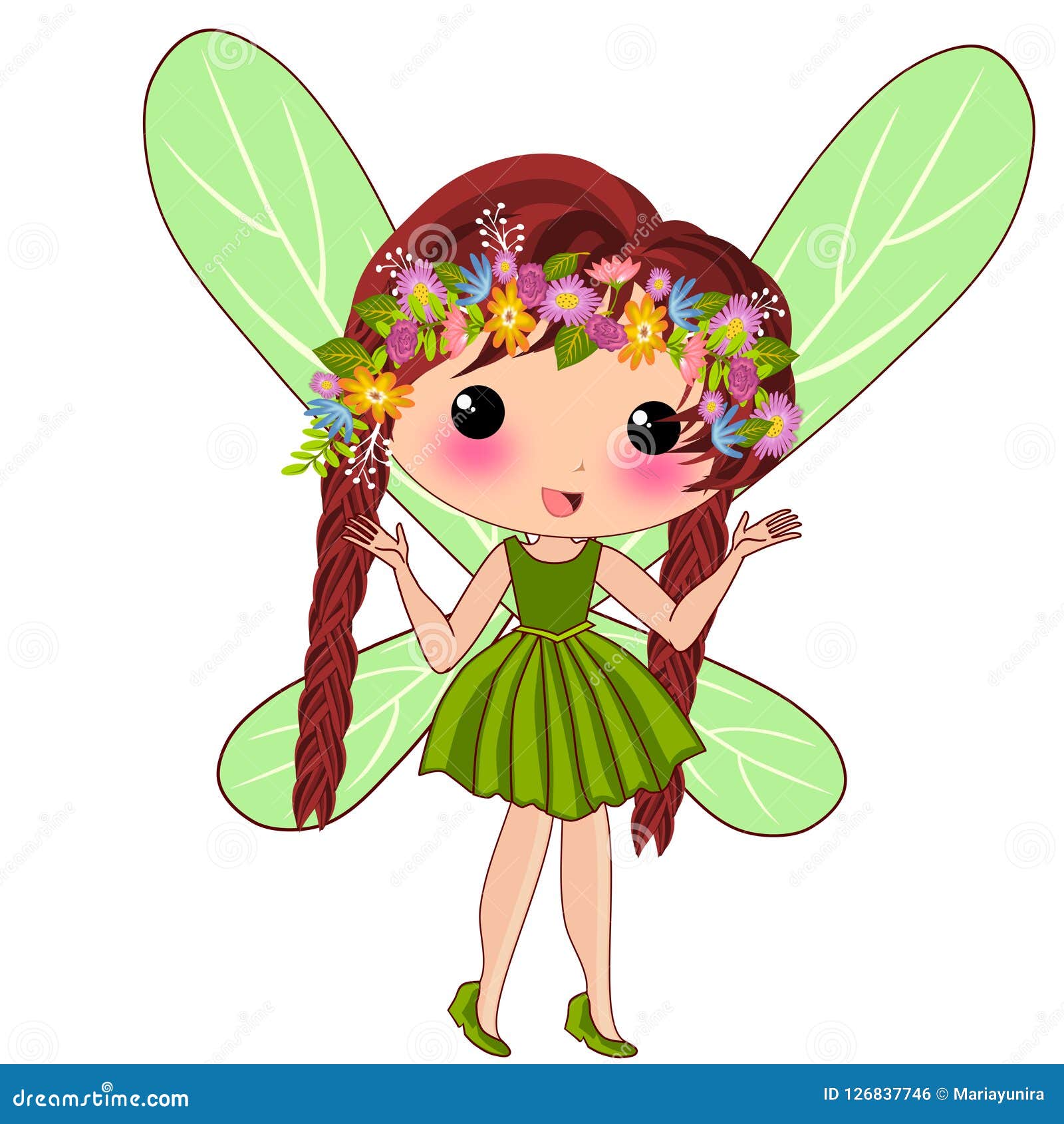
Fairies
Fairies are nature spirits, mythical beings usually described as tiny winged human figures, especially females. Their wings, rather than being similar to those of birds, look more like those of dragonflies and butterflies. The origins of fairies could reside in the Greek myths of the nymphs, or in the Celtic pagan traditions. But regardless of the details of size, etc. the most ample meaning is that a fairy, or a faeric individual, is not entirely human: part of him or her belongs to the world of the supernatural.Many fairy tales feature fairies, especially fairy godmothers, who protect the main character (generally a girl) and grant her wishes. Good fairies bestow boons and good fortune and evil fairies curses and evil spells. For example, in "The Sleeping Beauty in the Wood", by Charles Perrault, you can find examples of both good and evil fairies: http://www.timelessmyths.com/celtic/faeries.html http://www.pitt.edu/~dash/perrault01.html
a
Giants
Giants are enormous, generally human-shaped beings who are believed to live mostly in the mountains. Sometimes, they are described as being part of the mountains themselves. Because of their size they are dangerous to humans, and also described as slow and clumsy. They can be good in some tales, but they are often portrayed as evil. One famous fairy tale about giants is The Story of Jack and the Giants:http://www.mythencyclopedia.com/Fi-Go/Giants.htmlhttp://www.gutenberg.org/files/15621/15621-h/15621-h.htm
a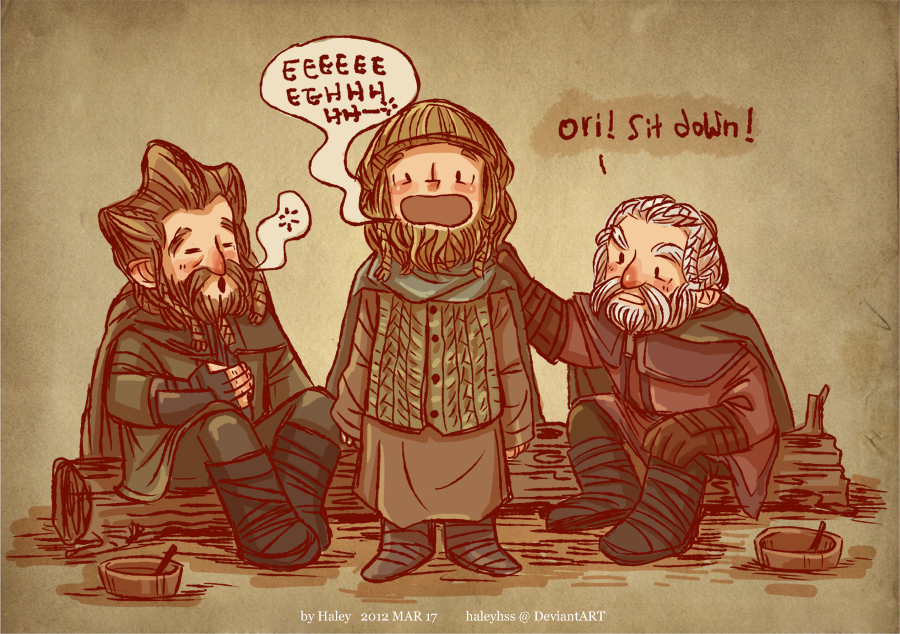
Dwarfs, or Dwarves
The opposite of giants, dwarves are human-shaped mythical creatures who are smaller than an average person, yet far sturdier. Their relationship with mountains is even greater than that of giants: they are often portrayed as miners and precious stones and gold collectors. They feature long beards, enjoy eating and drinking beer and if in need they are powerful warriors. The Hobbit, by J. R. R. Tolkien, has underlined the importance of the characters of dwarves and their struggles against dragons. One famous fairy tale which features dwarves is the tale of "Little Snow-White": http://www.gutenberg.org/files/20748/20748-h/20748-h.htm#snowhttp://www.mythencyclopedia.com/Dr-Fi/Dwarfs-and-Elves.html
a
Elves, or Elfs
Traditionally, elves are beings very similar to fairies, yet they are not generally described as winged. Linked to forests and nature in general, elves have pointed ears and magical powers related to nature and the elements. Christian elves, the ones helping Santa Claus in Christmas, are a more recent creation, introduced by Louisa May Alcott in 1850, in her unpublished poem "Christmas Elves", which somehow managed to get known and develop into this more recent myth.The works of J. R. R. Tolkien raised the "race" of elves as the common notion that we have of them today: beings similar to humans but far more perfect: they live much longer and are more beautiful, pure, skilled and powerful than us in all senses, even as regards magic. For Tolkien, humans were the second race to be created, while elves were the first one. According to Tolkien again, orcs are elves that have become corrupt and enslaved by Morgoth, the evil god in The Silmarillion. http://tolkiengateway.net/wiki/Elveshttp://www.hlntv.com/article/2013/12/20/elf-christmas-origins-history
a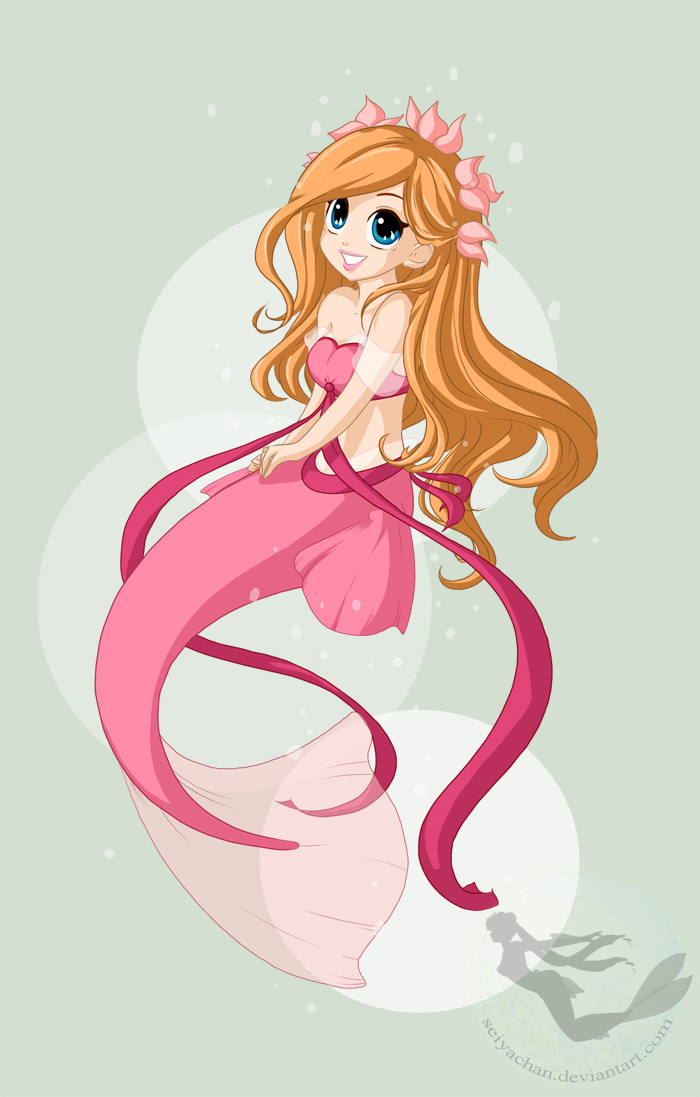
Mermaids, Sirens
Mermaids are mythical beings half-women, half-animals. According to the classical myths, mermaids are half-human, half-fish, and sirens half-human, half-bird. It were sirens who lured men with their beautiful, charming voices, not mermaids; but at some point both myths got mixed up and mermaids became the half-woman, half-fish type of creature we all are familiar with.Originally, mermaids, the creatures of the Greek god Triton, were the sea nymphs called nereids. They were able to breed with humans and one of them is supposed to have been the mother of the hero Achilles. "The Little Mermaid", by Hans Christian Andersen, is a very well-known fairy tale with a mermaid as the protagonist.http://knowledgenuts.com/2014/02/05/the-difference-between-mermaids-and-sirens/http://www.gutenberg.org/files/32572/32572-h/32572-h.htm#Page_124
a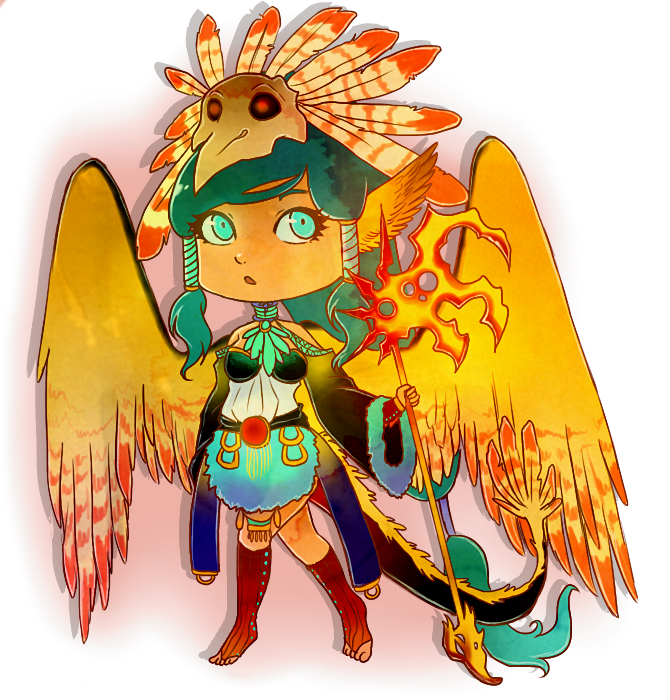
Harpies
Harpies are the spirits of sudden and violent gusts of wind. The daughters of the god of the wet element and a sea nymph, they were called "The Hounds of Zeus", and if he ordered it so, they stole objects and people from the earth to bring them to him, or tormented a hero or heroine that had insulted the Gods as a punishment. According to other versions, they actually serve Hades. Their name makes a reference to their drive for snatching. Harpies are winged bird-like animals with sharp talons and an ugly old woman's head, yet you can also find representations of harpies portraying them as more average-looking winged women. http://www.greek-gods.info/monsters/harpies/http://www.theoi.com/Pontios/Harpyiai.html
aSea Monsters
Famous sea monsters from legends and myths include the Kraken (an enormous octopus-like creature of Scandinavian origin), the Leviathan (a sea beast mentioned in the Old Testament), the Hydra (a serpent-like monster who lived in a swamp), and many others. They are generally huge, whale, snake or octopus-like monsters that get hold of ships and men and engulf them into the ocean. H. P. Lovecraft was a horror author who created a whole mythology of horror beings, called the Ancient Gods or Ancient Ones. One of the most famous ones is the sea monster Cthulhu. http://www.hplovecraft.com/writings/sources/ccmt.aspxhttp://www.ancient-origins.net/myths-legends-europe/legendary-kraken-00267http://www.mythencyclopedia.com/Le-Me/Leviathan.htmlhttp://www.perseus.tufts.edu/Herakles/hydra.html
a
Phoenices
The phoenix is a mythical bird which never dies, for when it is too old it bursts into flames and from this fire a new chick is born. Because of that, it is a powerful symbol of resurrection. Curiously enough, the myth of the phoenix seems universal, like that of dragons: you can find myths about phoenices from Ancient Egypt, Persia, Greece, Tibet and in Judaism and Christianity. In the Harry Potter series, a phoenix, called Fawkes, is the pet animal and protector of Harry Potter and Professor Albus Dumbledore. http://www.newworldencyclopedia.org/entry/phoenix_%28mythology%29
aMinotaurs
Minotaurs are furious beings half-human, half-bull. The character originates in the classical myth of Theseus. The minotaur was born from the union of Pasiphae, Queen of Crete, and a bull sent by Zeus. In order to keep him under control, the King locked him in a labyrinth built by Daedalus in Knossos, and sent people every few years to the labyrinth to be devoured by him. Theseus, with the help of Princess Ariadne, eventually killed the minotaur. http://www.greekmyths-greekmythology.com/myth-of-theseus-and-minotaur/
a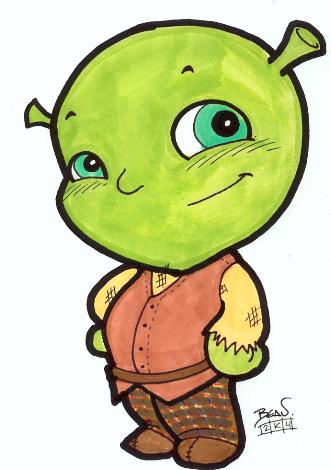
Ogres
Ogres, and their feminine counterpart ogresses, are generally depicted as huge and disgusting-looking creatures who enjoy devouring humans or exploiting them in some way or another. One of the most famous ogres in fairy tales is the one from "The Adventures of Puss in Boots", which also has the ability to shapeshift. Following a recent tendency to "redeem" evil characters from fairy tales, Shrek movies portray ogres under a very different light: Being ill-tempered, Shrek is not evil but reserved, negative and sarcastic. But when he falls in love he is able to soften a little bit. Via the movies, ogres have become somehow a new symbol, both individually and in relationships, of being true to yourself and accepting yourself as you are... and learning the necessary patience to be able to live with other people. http://www.gutenberg.org/files/37529/37529-h/37529-h.htmhttp://upload.wikimedia.org/wikipedia/en/3/39/Shrek.jpg
aCentaurs
Generally male, centaurs are creatures half-human, half-horse. In particular, it is the upper part of their body which is human, and the lower part of their body which is that of a horse. According to the myth, they are dangerous and extremely sexually-driven creatures born from King Ixion and Nephele; or, according to another version, the sons of Apollo's son Centauro. They are usually portrayed as very bad drinkers and skilled archers. They represent the fight between reason and primitiveness. The constellation of Saggitarius represents a centaur. One of the most famous centaurs in the Greek myths is the wise, kind and tormented Chiron.http://www.greekmythology.com/Myths/Creatures/Centaur/centaur.htmlhttp://www.mythweb.com/encyc/entries/centaurs.html
aFauns, Satyrs
With fauns and satyrs it happens more or less the same phenomenon as with mermaids and sirens: at some point the myths blended together and the mythological figure, in many occasions, became one. Satyrs are of Greek origin, half-human, half-goat, with a pair of goat horns on their head. Fauns are of Roman origin and are less wild and bawdy than satyrs, having no goat's hooves. Fauns, actually, are half-human, half-fawn, and they feature a pair of fawn horns on their head. They represent the fear of getting lost in the middle of the forest.http://www.differencebetween.net/miscellaneous/culture-miscellaneous/differences-between-a-fawn-and-a-satyr/http://mythology.wikia.com/wiki/Faun
a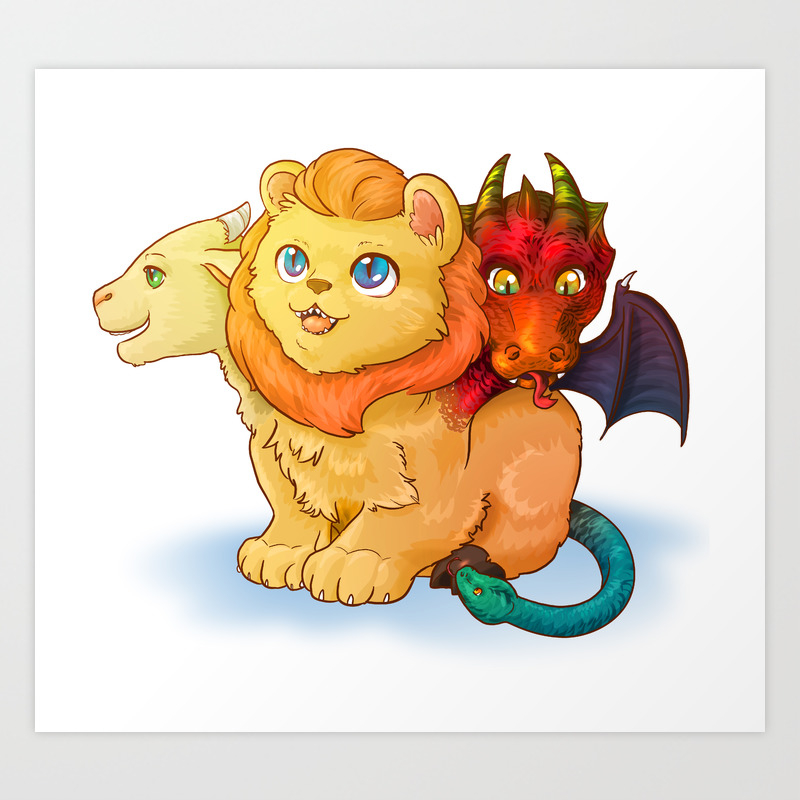
Chimeras
Chimeras, or Khimairas, are impossible creatures from Anatolia. The daughter of Typhon and Echidna, Chimera combined the body of a lion with an extra head and legs of a goat and a serpent tail. With the help of Pegasus, the hero Bellerophon eventually slayed the strange beast. Similar to Cerberus, the origin of the myth of such a creature could perhaps be explained by witnessing unexplained birth defects in humans or animals. Nowadays, the term chimera denotes a sense of hybridity in which the many different elements combined, instead of mingling peacefully fight against each other.http://www.theoi.com/Ther/Khimaira.htmlhttp://www.gods-and-monsters.com/chimera-mythology.html
a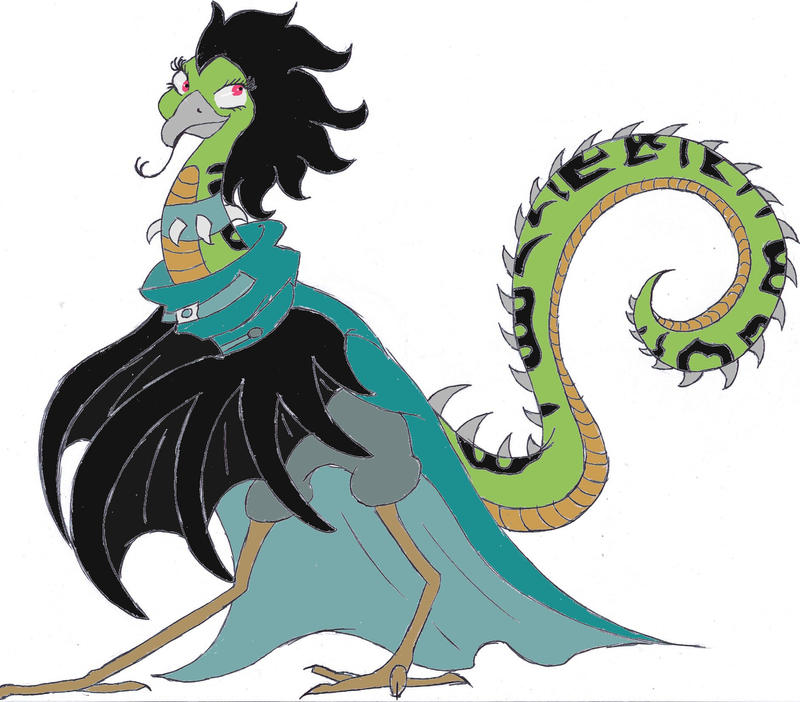
Basilisks, Cockatrices
The Basilisk, or Cockatrice, was called the "King of Serpents", and was a very poisonous creature half-reptile, half-rooster (a two-legged dragon with a rooster head, dragon wings and a serpent's tail). It is born from the very unlikely union of a dragon with a rooster. Basilisks are believed to be able to petrify people only by staring at them or breathing over them, and the only way to kill them is trick them into staring at themselves in a mirror. The only animal which was thought to be immune to basilisks or cockatrices is the weasel. A similar being is the salamander. While real salamanders are amphibious animals, mythical salamanders show the same property, but between earth and fire. They are believed to be immune to heat and to produce fire themselves via their eyes or breath. http://www.gods-and-monsters.com/basilisk-mythology.htmlhttp://global.britannica.com/EBchecked/topic/123624/cockatricehttp://www.dragonorama.com/creatures/salamander/
aWerewolves
Werewolves are cursed individuals who morph into wolves during the full moon nights. Like vampirism, lycanthropy was believed to be some kind of evil curse whose transmission from individual to individual resembles a venereal disease: an attack leads to an exchange of blood or fluids and to a loss of control over what happens to your body. Like vampires again, they are potrayed as highly sexualised creatures. The origin of the werewolf myth may have been born in ancient Greece, where it was believed that if you ate flesh from a wolf mixed with that of a human you acquired the condition and it stayed with you forever. Werewolves can only be killed with a silver bullet.More recent and benevolent interpretations relate the figure of wolves with that of health, freedom and contact with nature far from civilisation. Clarissa Pinkola Estés states that all women possess in their soul an "inner wolf" and that, to stay healthy and happy and to be able to cope, they need to keep in contact with that inner feminine, protective and instinctive strength.http://www.livescience.com/24412-werewolves.htmlhttp://www.clarissapinkolaestes.com/women_who_run_with_the_wolves__myths_and_stories_of_the_wild_woman_archetype_101250.htm
a
Vampires
Vampires, like werewolves, are people who were born normal human beings but who got bitten by an individual infected of vampirism, becoming vampires themselves. This form of contagion also happens with "walking dead" people, called zombies. Traditionally, vampires can't eat or drink anything but blood, can't stay in the sunlight, mirrors don't reflect their image and can shapeshift to bats or other animals. Whereas werewolves can only be killed with silver, vampires are hurt by sunlight, garlic, crosses and blessed water, and killed with a wooden stake nailed to their chest. They are generally elegant, seductive and of weak and unhealthy appearance. The origin of the figure of the vampire can be traced to the ancient Romanian tradition which states that if a bat flied over a fresh corpse, it could turn into a revenant - a vampire -. In literature, the most important classical text related to vampirism is Dracula by Bram Stocker.http://listverse.com/2010/09/30/8-vampire-myths-explained/http://www.gutenberg.org/files/345/345-h/345-h.htm
a
Angels
Angels are the celestial counterparts of fairies in the sense that their powers, instead of coming from nature, come from Heaven. Angels are believed to be the messengers of God, but instead of granting wishes or boons (they can intercede before God though, for miracles) their main function is protective: each child is supposed to have a Guardian Angel since his or her birth who will accompany them throughout all their lives. While most people don't believe in fairies, a great deal of people honestly believe in the power of angels and the Divine Intercession. Angels look like very beautiful people, children or adults, generally provided with a large pair of white wings, but actually there are many different types - and ranks - of angels, each with different functions and characteristics: angels, archangels, principalities, virtues, powers, authorities, thrones, cherubim and seraphim. There are many Christian tales about angel's miracles. The Buddhist equivalent of angels are the devas, and for Muslims and Jews an angel is called a malāk.http://www.pantanassa.co.za/Heavenly-Hosts/angels-and-archangelshttps://www.youtube.com/watch?v=1DJR9KoMcXQ
a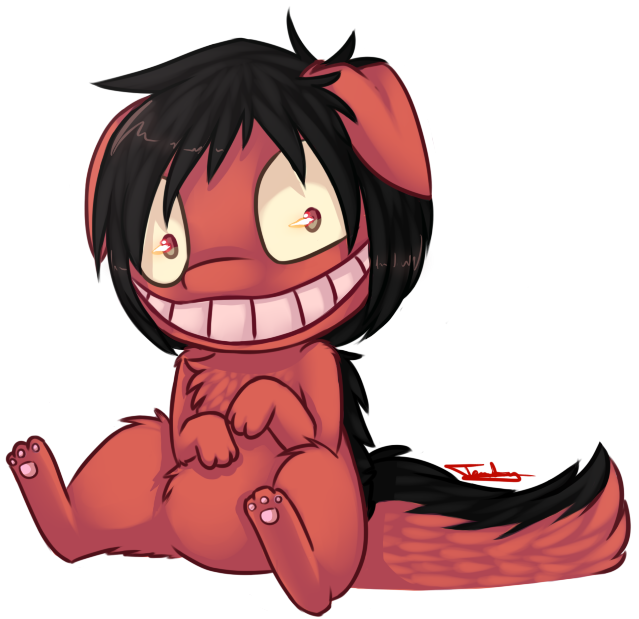
Demons
Demons or devils are fallen angels. Again, they are not from this world but celestial in nature. While other types of evil beings have a natural origin (half beast, inhabiting deserts or rivers, etc.), demons are not from this world. They are constantly plotting to cause our spiritual demise, and while you need to consciously "choose" to let devils enter your life, they are very good in tricking you. The story of Faust by Goethe tells the story of a man who sold his soul to the devil in exchange for knowledge. In the end he is no wiser than he was before - although he does live quite some experiences -, and is only saved thanks to the fact that Good is always more powerful than Evil. In some cases, witty men are able to trick the devil themselves, and in these cases the stories are humorous. An extremely funny example of a fairy tale that features a demon is "Katcha and the Devil", of Czechoslovak origin: http://www.mythencyclopedia.com/Cr-Dr/Devils-and-Demons.htmlhttp://www.gutenberg.org/files/32217/32217-h/32217-h.htm#Page_99
a
Genies
Genies, jinni or djinn are fire elementals from the Arabic tradition. They are associated with the desert landscape and believed to be made of scorching, smokeless fire. They are believed to be lower than angels because they are mortal, and are believed to be generally very evil, morphing into animals and natural elements like rocks or plants of the desert to trick men. They are prone to attacking humans and enslave them through debts they have voluntarily gone into, similar to what demons do. Our Western vision of genies comes rather from tales such as "Alladin and the Magic Lamp", in which genies live in lamps or rings and grant wishes.http://www.gutenberg.org/files/57/57-h/57-h.htmhttp://www.pantheon.org/articles/j/jinn.html
a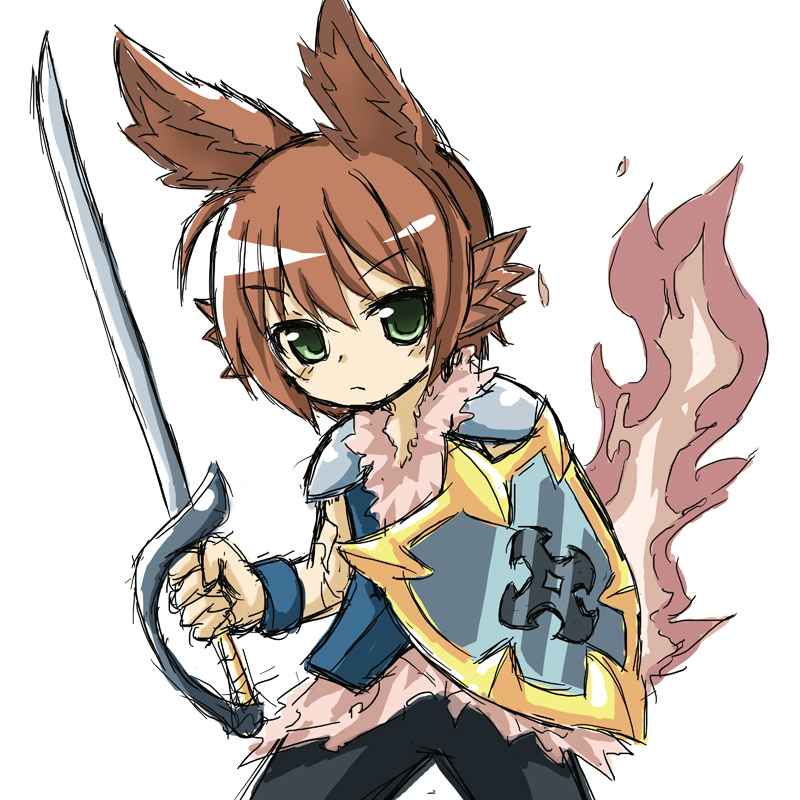
Shapeshifters
Shapeshifters are beings or humans who are able, because of their curses or simply by nature, to change their appearance, sometimes involuntarily and sometimes at will, acquiring thus for a limited period of time the strength and energy of the animal or monster they have morphed into. Morphing can happen via magic as well: In the Arthurian myths, Merlin morphed Uther Pendragon, King Arthur's father, changing his external appearance into that of Gorlois, Duke of Cornwall, in order that he could sleep with Arthur's mother, who was married to him at the time. Vampires and werewolves are other examples of beings that can transform into animals. One of the most famous example of shapeshifter via magic is the ogre from the tale of "The Adventures of Puss in Boots"http://www.gutenberg.org/files/37529/37529-h/37529-h.htm
a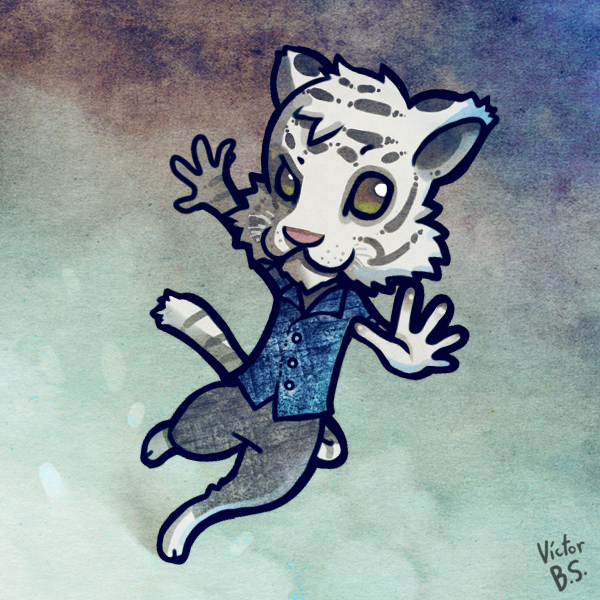
Cursed or Enchanted Characters
Cursed, bewitched, enchanted characters very often morph into animals or monsters because of a bad encounter they have had with an ill-tempered wizard, fairy or witch, who curses them, most often, because of a personality flaw of the characters themselves: maybe they refused to help someone in need, or treated someone badly, or have been vain and proud with the humble or needy, and therefore they are punished thus, through their curse. To become human again, these characters need the help of the hero or heroine, which with their love and by accepting them as they really are become capable of redeeming the enchanted character. Beast, from The Beauty and The Beast, by Jeanne-Marie LePrince de Beaumont is one of the most famous examples in fairy tales of cursed character. "The Frog Prince" by Walter Crane is another very famous example.http://www.pitt.edu/~dash/beauty.htmlhttp://www.gutenberg.org/files/20437/20437-h/20437-h.htm
a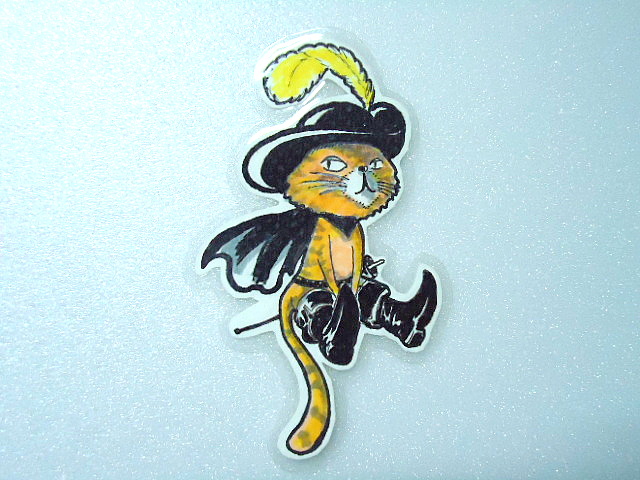
Talking Animals
Talking animals appear either on their own in fables, or as magical characters who can speak and interact with humans. They preserve their animal characteristics, drives, strengths and weaknesses, but they also reason, act and communicate like humans do.Fables, as a subgenre of fantasy, feature mostly only animals engaged in some type of social interaction that resemble real life human behaviors, with a highly moralistic and didactic tone. Aesop's Fables by Aesop are very famous in this regard.On the other hand, there are also fable-like fairy tales featuring animals defending themselves from the evil of humans, who use them at will and, when they are too old, simply dispose of them. "The Bremen Town Musicians" by the Brothers Grimm is an example. One of the most famous examples of fairy tales featuring a talking animal as a protagonist, and working to benefit his master, is "The Adventures of Puss in Boots". http://www.gutenberg.org/files/37529/37529-h/37529-h.htmhttp://www.gutenberg.org/files/21/21-h/21-h.htmhttp://www.pitt.edu/~dash/grimm027.html
aPsychology and Symbolism of Fairy Tales
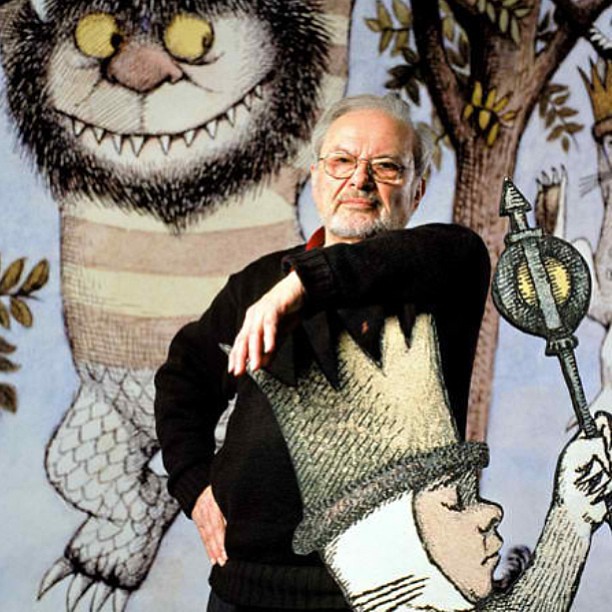
'"Where the Wild Things Are": The Psychology Behind Maurice Sendak's Classic'

"Hidden Meanings in Children's Fairy Tales"
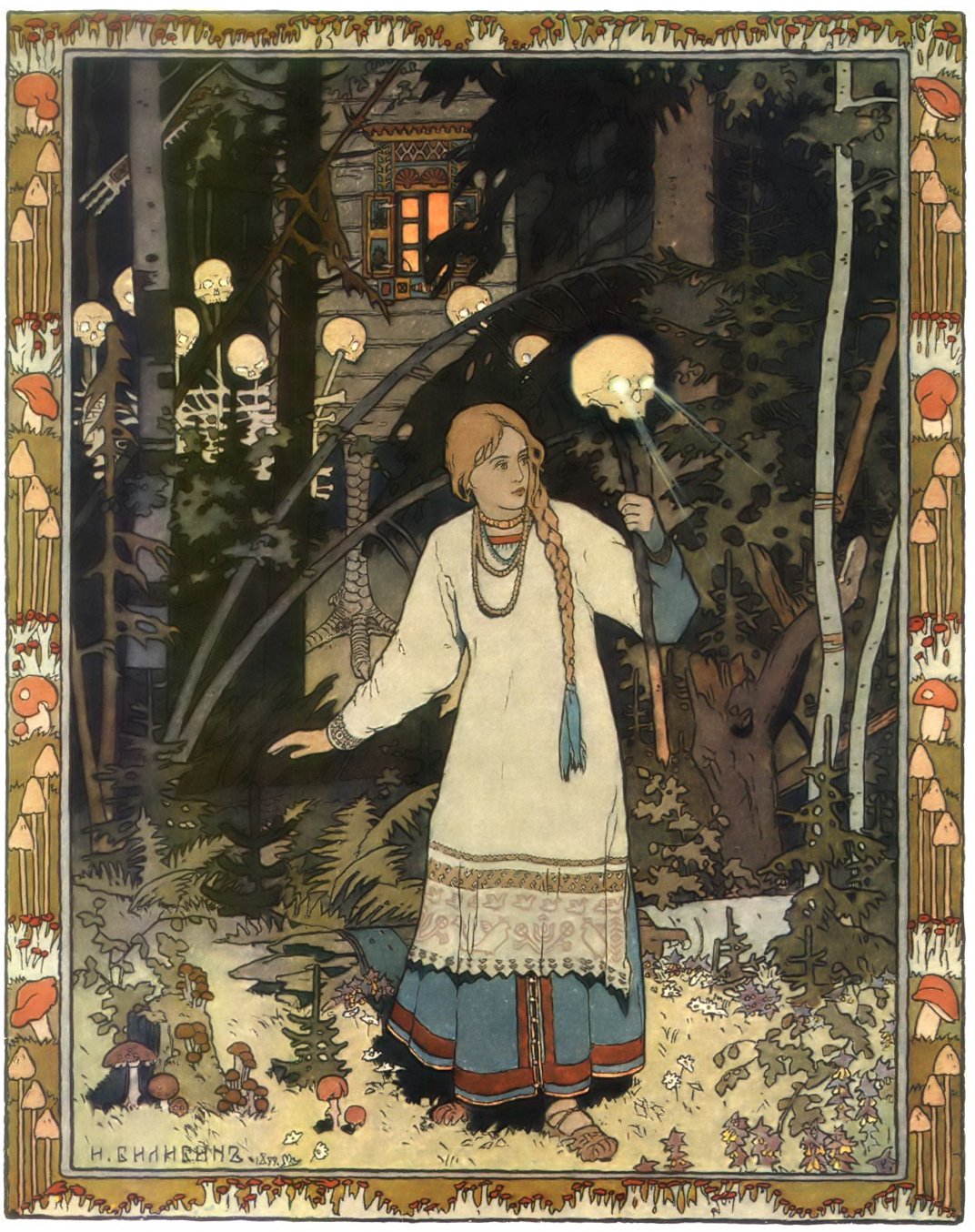
Quotes and Interview with Clarissa Pinkola Estés
Quotes on Goodreads.com by Clarissa Pinkola Estés, jungian analyst, 'cantadora', storyteller:http://www.goodreads.com/author/quotes/901977.Clarissa_Pinkola_Est_s
a
G. K. Chesterton's Vision of Virtue in Fairy Tales

Interactive CV

Mindomo Mindmap "Semantic Field of Fairy Tales" by María Concepción Pomar. CC BY-NC-ND-SA
Fantasy: A Few Definitions
Fantasy narrative is generally understood as a type of fiction in which magic is involved. This type of force (magic) is above any social position (it can affect kings and mendicants all the same), in most cases benevolent (many fairy tales show a happy ending as a result of magic) and related to reaping the fruits of one's actions and good character: it rewards characters with positive traits like generosity, courage and innocence, and punishes those who show negative traits like greed, cowardice and double-facedness.Therefore, it can be stated that magic is essentially an over-powerful, highly moralistic type of energy that can alter the characters' reality for the highest good of all.
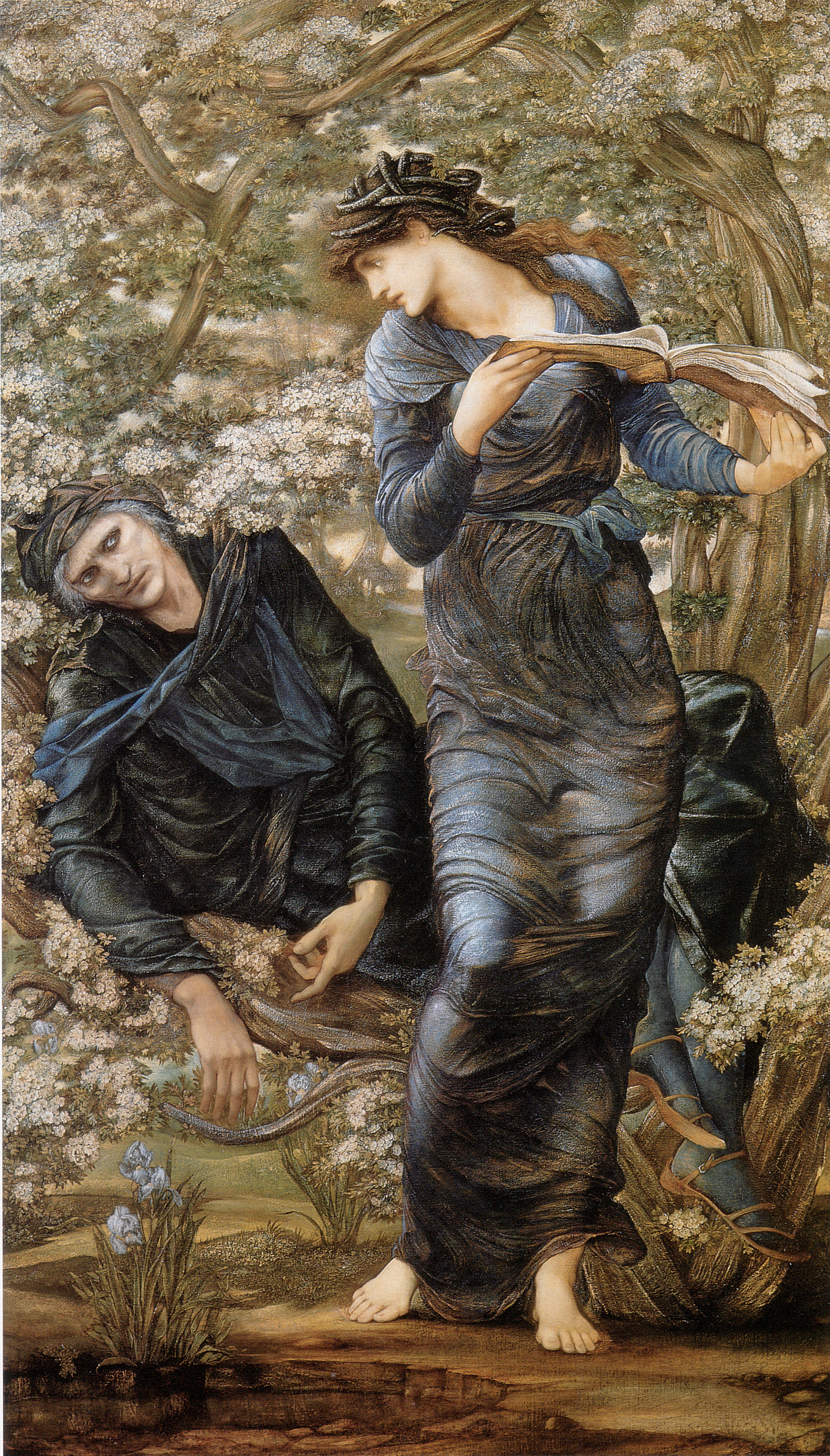
"Myths, Folktales and Fairy Tales" by Scholastic

¿What is a Fairy Tale?" by SurLaLune
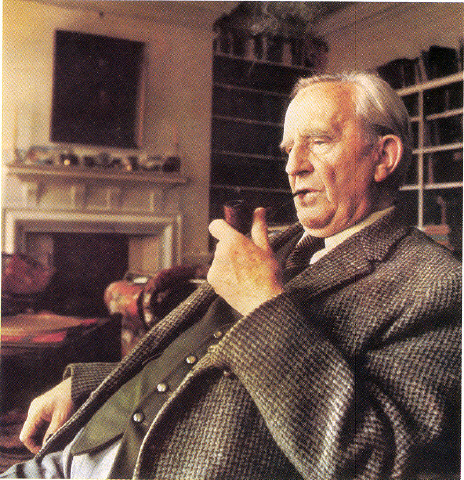
J.R.R.Tolkien Essay "On Fairy Stories"
Morphology of Folk Tales
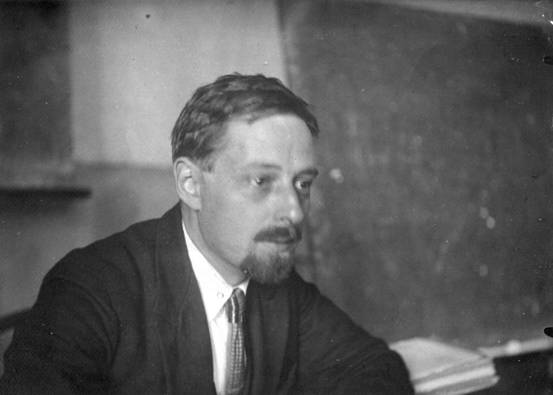
Vladimir Propp "Morphology of the Folktale"
Characters
The Villain
The hero or heroine's Nemesis, evil doppelganger, natural enemy. The character who embodies the opposite of the hero or heroine's virtues: devious, hypocritical, greedy, ambitious, deceptive, treacherous... The Villain represents a weakness of character that bids him or her to resort to evil as an easy way to achieve his or her goals, because being virtuous is just too difficult or too much work. Sometimes, he or she is also very powerful magically speaking, but in fairy tales all magic from the Good is far more powerful than that from the Bad, and eventually prevails.
The Dispatcher
The Dispatcher is the character who requests the hero or heroine the task that has to be accomplished: some character needs healing; something valuable has been lost; some magic is necessary to solve a difficult problem or someone needs rescuing. Generally speaking, the Dispatcher is someone very close to the hero or heroine (a relative, a parent, etc.) and it can also accomplsih other roles, such as the King or even the false hero, etc.
The Helper
The Helper is a figure that aids the hero or heroine in his or her quest. It can fulfill the function of the Donor as well, and in this case he or she would have more relevance because of his or her magical powers. Many characters along the story can be helpers as well, friends or relatives of the protagonise.
The Princess and the King
The Princess and the King generally go together, unless one of them is actually the hero or heroine of the story. The Princess is the prize and very often the King is the Dispatcher. Both characters, when accomplishing this role, are extremely passive: the King needs someone's help and waits patiently for the appearance of a champion who can solve all his problems. His daughter, the Princess, praised basically for her extreme beauty and virtuous nature, marries the hero in the end regardless o her own feelings. The character of the Queen is even more passive in this structure, submissive to her husband's decisions and, if provided with any psychological trait, it generally is superficiality, vanity or greed. Many queens are also absent in fairy tales, having died during childbirth labour.
The Donor
The Donor grants the hero or heroine a boon or an object: something crucial for the fulfillment of the quest. It could be a magical item, a special piece of advice or wisdom. Its role is often combined with that of the Helper, but not necessarily. The main difference between the Helper and the Donor is that the latter yields more magical power or knowledge, whereas many characters - even friends, members of the family, etc.- can be helpers.
The Hero
The main character of the story and the one which is to accomplish the function to restore the balance of good over evil. He or she needs to show a lot of virtuous qualities to carry out his or her quest: courage, good-heartedness, humbleness and lack of greed, envy and ambition. In fairy tales, both God and magic protects a character who embodies these characteristics.
The False Hero
The False Hero or Heroine is a character who wants to claim some of the hero or heroine's merits for him or herself, or who simply pretends to be good and in favour of the hero or heroine, but this fact turns out to be false. Very often, the False Hero and the Villain are the same character in the story.
Functions
Functions: Formulation Theses
Functions of characters serve as stable, constant elements in a tale, independent of how and by whom they are fulfilled. They constitute the fundamental components of a tale.
The number of functions known to the fairy tale is limited.
The sequence of functions is always identical.
All fairy tales are of one type in regard to their structure.
Functions Sequence
In the 'Rondalla Mallorquina' "En Bernadet i la Reina manllevada" (Prince Bernard and the False Queen), gathered by En Jordi Des Racó and published by Moll Editorial, many of the basic 31 functions by Propp are covered, even if not strictly.
1. Absentation
Function characterised by the absence, physical, emotional or symbolic, of one character, which allows space for the eventual violation of the interdiction and conflict to take place. ("Prince Bernard and the False Queen" Rondalles Mallorquines d'en Jordi des Racó):Prince Bernard is the only son to a very happy couple of monarchs. But at some point there is a breach in their relationship, and the king stops being faithful to his royal duties as well as to his wife. This emotional absence leads, later on, to his wife's physical absence.
2. Interdiction
A prohibition, something that must not be done, tasted, tried or discovered. ("Prince Bernard and the False Queen" Rondalles Mallorquines d'en Jordi des Racó):Taking advantage of this, a young and very beautiful evil witch builds, via her magic powers, a palace right in front of the king's palace's windows, showing off her opulent riches, many servants and extreme physical beauty. Soon the king becomes tempted by such an alluring neighbour. She represents the temptress: the interdiction.
3. Violation of the interdiction
The violation of the interdiction carries a series of consequences that trigger the need of a hero or heroine in the story. ("Prince Bernard and the False Queen" Rondalles Mallorquines d'en Jordi des Racó):The king soon surrenders to his attraction towards the young witch. The balance in the family is broken.
4. Attempt at reconnaissance
The evil character or villain struggles to get information about the main characters, or approach them in a devious way. ("Prince Bernard and the False Queen" Rondalles Mallorquines d'en Jordi des Racó):The witch exploits the king's weak points. While she is having an affaire with him, she does everything to bewitch him even further and manipulate him into doing her bidding. She wants to become the new queen.
5. Delivery or reception of information
The evil character is successful at getting information or some means to harm the good characters or steal something valuable from them.("Prince Bernard and the False Queen" Rondalles Mallorquines d'en Jordi des Racó):The witch succeeds, and the king becomes and easy puppet, willing as much as herself to get rid of his wife and put his mistress on the throne instead. He agrees with her to carry out a plan.
6. Trickery and attempt at deception
The evil character attempts to carry out some heinous act with the help of an oblivious or mesmerised good character, or even convinces him or her to execute the task themselves.("Prince Bernard and the False Queen" Rondalles Mallorquines d'en Jordi des Racó):The king and the witch execute their plan against the queen: the king gouges out the queen's eyes and imprisons her in a faraway castle. He tells his subjects that the queen is dead.
7. Complicity and success at deception
The evil plan has been successful and many people have been tricked or deceived. Triumph of evil over good because of a weakness of character.("Prince Bernard and the False Queen" Rondalles Mallorquines d'en Jordi des Racó):The subjects believe the lie and accept the witch as the new queen. The king and the new queen marry and she ascends to the throne.
8. Villainy, causing harm and loss. Sense of lack and desire
Consequences from evil's success. Harm and loss. There is a sense of longing, of incompleteness, of lack of balance towards the good or the bad. Struggle to move the scales in one direction or another. ("Prince Bernard and the False Queen" Rondalles Mallorquines d'en Jordi des Racó):The new queen is cruel and frivolous. The king is mesmerised by her beauty. There is no more peace at the kingdom: the rightful queen has disappeared. Soon, the witch grows an intense desire to get rid of Prince Bernard as well.
9. Mediation, request or command and dispatchment
There is a request presented to the hero or heroine as a consequence of the feelings of lack and longing. Usually, a very difficult task. ("Prince Bernard and the False Queen" Rondalles Mallorquines d'en Jordi des Racó):The false queen starts feigning she is sick, and states that only a magical object (the liver of a legendary green horse) could save her. She tells the king to command Prince Bernard to get the liver of a green horse for her.
10. Beginning counteraction
The hero or heroine, reluctantly or willingly accept the task and embarks on the quest. ("Prince Bernard and the False Queen" Rondalles Mallorquines d'en Jordi des Racó):ollowing his father's orders, Prince Bernard obediently leaves in search of the requested liver from the mythical green horse, although he knows that this quest will probably mean his demise.
11. Departure
The hero or heroine starts the journey most often not knowing what they have to do or where to look for any clue or information. ("Prince Bernard and the False Queen" Rondalles Mallorquines d'en Jordi des Racó):Prince Bernard starts looking for information about the green horse in faraway lands. Along the way, he finds an old wise woman who tells him she knows something about it.
12. Testing; the first function of the donor
Donors usually appear in front of the hero or heroine as insignificant, humble, bewitched, sometimes even disgusting characters, and only help him or her if they show a virtuous attitude and kind-heartedness.("Prince Bernard and the False Queen" Rondalles Mallorquines d'en Jordi des Racó):The wise woman tests Prince Bernard's faith and compliance towards God and is satisfied with his answer. She bids him to obey her instructions in an exact manner and never reveal her identity. He swears upon his honor to do so, and she finally agrees to help.
13. Reaction to the actions of the donor
The hero or heroine proceeds to follow as faithfully as possible the donor's commandments in order to obtain a magical object or agent. ("Prince Bernard and the False Queen" Rondalles Mallorquines d'en Jordi des Racó):The wise woman tells Prince Bernard to travel East while carrying a mirror and a sword with him, and expect the green horse's appearance under a huge almond tree. Hidden amidst the branches, he is to wait for the horse, and when he arrives and stares into the mirror, infatuated by his own beauty the young prince is to jump on top of him and slay him with the sword at once. Otherwise, the horse will devour him in no time. Very grateful, Prince Bernard says goodbye and proceeds to follow her instructions.
14. Provision or reception of a magical agent
The hero or heroine gets all the necessary tools, weapons or ingredients necessary to accomplish his or her task, which involves magic.("Prince Bernard and the False Queen" Rondalles Mallorquines d'en Jordi des Racó):Prince Bernard obeys everything the wise woman has told him to do. He gets the mirror and the sword, heads East and looks for the huge almond tree.
15. Spatial transference between two kingdoms, guidance for a quest
When the hero or heroine enters a dangerous territory or foreign kingdom, guided by the donor's instructions, moves between different aspects of reality. He or she is now in the realm of magic, of the unknown and the unexpected, and reason and logic don't apply: only the apparently nonsensical instructions provided by the donor. ("Prince Bernard and the False Queen" Rondalles Mallorquines d'en Jordi des Racó):Very, very far in the East, Prince Bernard finally finds the huge almond tree and prepares himself for the struggle. He places the mirror on the tree's trunk and climbs to the highest branches.
16. Struggle and direct confrontation
In that magical territory, the enemy appears and there is a fight between the forces of good and evil. It is mandatory for the hero or heroine to follow the instructions carefully and use his or her magical objects accordingly.("Prince Bernard and the False Queen" Rondalles Mallorquines d'en Jordi des Racó):When the green horse appears, as expected he falls in love with his own image in the mirror. Then Bernard falls right over him from above and slays him at once. Victorious, he comes back home carrying with him the liver of such a strange creature.
17. Branding and marking, being wounded
The hero is branded or marked during the struggle, be it physically or symbolically, for good or for bad. ("Prince Bernard and the False Queen" Rondalles Mallorquines d'en Jordi des Racó):In this particular case, it is not the hero but the villain who is wounded. When Prince Bernard returns home with the liver of the green horse, the false queen starts screaming at him very angrily that he has slayed her dear brother. She had sent Bernard to him confident that he would slay the young prince in no time. The king starts to notice how strange was the petition of the new queen.
18. Victory, the villain's defeat
There is a victory above the villain, reestablishing the natural balance of good over evil. ("Prince Bernard and the False Queen" Rondalles Mallorquines d'en Jordi des Racó):The false queen has lost one of her brothers, which is a great defeat for her. The same story repeats itself yet another time when she asks the king to send Prince Bernard to get her a bottle of a special water from the Fountain of the Nine Stones. These stones fall over anybody who approaches the fountain, crushing him or her to death. Again finding the same old woman along the way, Prince Bernard learns the instructions to get to the water without touching any of the stones (with the help of a white dove). When doing so, the stones crumble down and fall to dust. When Prince Bernard returns to the castle again victorious with this water the new queen crashes the bottle violently against the floor, and screams angrily that Prince Bernard has killed her nine beloved sisters. She is again wounded and defeated by this new loss.
19. Designation, the initial loss is repaired
The sense of balance at the beginning of the story (or at least some of it) recovers or starts to recover after the quests have been accomplished. ("Prince Bernard and the False Queen" Rondalles Mallorquines d'en Jordi des Racó):As the magical objects have been found, the false queen cannot complain. The king is angry and confused at her and her weird petitions. A short period of peace ensues after that.
20. Return
The hero or heroine returns from his or her journey with renewed strength, knowledge and magical powers. ("Prince Bernard and the False Queen" Rondalles Mallorquines d'en Jordi des Racó):The return, in this case, is not Prince Bernard's but his father's. Puzzled and displeased with the queen's suspicious behaviour, there is a gradual return of the king to his senses, and he menaces her not to endanger his son's life anymore with her whimsical requests.
21. Persecution and chase
The villain's final struggle to finish the hero or heroine after his or her defeat. A last powerful attempt to chase and destroy him or her.("Prince Bernard and the False Queen" Rondalles Mallorquines d'en Jordi des Racó):But the false queen is not going to give up. Albeit not physically, she keeps on trying to chase and destroy Prince Bernard. This time she requests that she wants that her mother's palace moves magically to their place while everybody sings and sounds and dances. Prince Bernard again has no other option than to leave again to satisfy his stepmother's wishes.
22. Rescue from the pursuit
Some ally or good character, maybe the donor him or herself, helps the hero or heroine overcome this final attack and confrontation. ("Prince Bernard and the False Queen" Rondalles Mallorquines d'en Jordi des Racó):Luckily, Prince Bernard finds again the same old wise woman along the way, and she warns him that this time the task is far more difficult than before. He is going to have to deal with the new queen's murderous mother, in her huge haunted castle. Like before, she instructs him about how to manage and survive.
23. Unrecognised arrival
The hero or heroine are not recognised when coming back to their lands, or acquire some role while in disguise to accomplish his or her purposes. ("Prince Bernard and the False Queen" Rondalles Mallorquines d'en Jordi des Racó):In this case the function differs slightly from the standard definition: After climbing a very dangerous mountain to get to the castle, Prince Bernard arrives at the palace owned by his stepmother's mother and he greets her very humbly and politely telling her that he is his beloved step grandson. Therefore, he acquires a new role but not in his own land, but in his enemies'.
24. Unfounded claims by a false hero
Some character will try to pass for the rightful hero or heroine, or steal the benefits from his or her accomplishments, or claim to be what they are not to fulfill their evil intentions. ("Prince Bernard and the False Queen" Rondalles Mallorquines d'en Jordi des Racó):Again, there is a slight variation from the original function. The old witch greets Prince Bernard as his loving granny, caring and worried to make him as comfortable as possible while he is at the castle. But, instead of that, she attempts to poison him and trick him to his death.
25. Difficult task
There is still some difficult task to be carried out by the hero or heroine to prove his or her identity or regain his or her rightful possessions. ("Prince Bernard and the False Queen" Rondalles Mallorquines d'en Jordi des Racó):The final task is the most complicated one for Prince Bernard. He is not to touch the bed in his given room, nor eat anything from the castle. Following the wise old woman's instructions, by blowing at a torch from a mysterious room, he literally puts out the old witch's life like a candle. In another room he finds some magical instruments that will accomplish what the false queen has requested him to do: to magically move all the palace to their place while everybody is singing, dancing, and sounding.
26. Resolution
Peace arrives at last and it is a moment of great joy and glory. The evil characters show their true colours. ("Prince Bernard and the False Queen" Rondalles Mallorquines d'en Jordi des Racó):Prince Bernard arrives at the palace with the whole castle singing, dancing and sounding. When the new queen sees that, she becomes fiery with anger. She screams that Prince Bernard has killed her mother! Her brother, her sisters, and now her mother! The king cannot stand this anymore.
27. Recognition
The hero or heroine is acknowledged as such, has gained magical power and wisdom after his or her adventures, and the balance has been restored and reinforced. ("Prince Bernard and the False Queen" Rondalles Mallorquines d'en Jordi des Racó):The king finally acknowledges that there is something seriously wrong with his new partner. Prince Bernard sends the executioner to blow and put out another torch from the old witch's castle, and the false queen falls instantly on the floor, dead.
28. Exposure of the villain
The villain's true nature and intentions are revealed at last. ("Prince Bernard and the False Queen" Rondalles Mallorquines d'en Jordi des Racó):When seeing this, everybody including the king realises that the new queen was a powerful and evil witch who had charmed them all all that time.
29. Transfiguration, new appearance
The hero or heroine's nature and appearance change for the better, or the ones from some character related, being saved from imprisonment, healed, etc. ("Prince Bernard and the False Queen" Rondalles Mallorquines d'en Jordi des Racó):In this case, it is not exactly Prince Bernard who changes his appearance but his mother: the king is now ashamed of what he has done to the rightful queen. Prince Bernard, using his new magical items travels to her prison, heals her eyes with magic and both return to the palace together, where she recovers her role as queen. She has been healed, purified and restored from the past pains and humiliations.
30. Punishment
The villains receive the punishments they deserve for their evil actions and intentions. ("Prince Bernard and the False Queen" Rondalles Mallorquines d'en Jordi des Racó):At that moment, the Devil himself appears and grabs the dead body of the false queen to carry her with him to Hell, in front of everybody's amazed and horrified eyes.
31. Wedding
The tale ends with a great and joyous celebration filled with peace, happiness and sense of union, generally a wedding. ("Prince Bernard and the False Queen" Rondalles Mallorquines d'en Jordi des Racó):Albeit not with a wedding, the tale ends with a sense or marital reconciliation: after all these terrible events, the king and the queen become a loving couple again and their son, Prince Bernard "Bernadet", is happy to see them once more together.
The Most Typical Plots According to Denis Johnston
1. Unrecognised virtue at last recognised
E.g.: A Midsummer Night's Dream by Shakespeare. The character of Helena, irrationally despised by her beloved Demetrius, finally wins his love at the end of the play (with the help of a little magic)
2. Hubris: the fatal hero's flaw
E.g.: Hamlet, by Shakespeare. Hamlet's procastrination in carrying out his duty as his murdered father's avenger leads eventually to his enemies plotting and causing his death.
3. The debt that must be paid
E.g.: The Merchant of Venice by Shakespeare.Shylock represents the figure of the merciless moneylender who won't forgive any debt.
4. The triangular romantic plot
E.g.: Twelfth Night or What You Will by Shakespeare.Duke Orsino-Viola-Countess Olivia; Countess Olivia-Malvolio-Sebastian... the play is simply full of hilarious triangles.
5. The spider and the fly: victim and victimiser
E.g.: Lady Macbeth, by Shakespeare. Everybody falls prey of the manipulations by Lady Macbeth, above all her husband.
6. Struggle to recover a lost or missing woman
e.g.: King Lear by Shakespeare. This tragedy exemplifies the struggles of a father to recover a daughter who he has judged wrongly, but eventually fails in recovering her.
7. The gift taken away
E.g.: The Tempest, by Shakespeare. Prospero, once Duke of Milan and now stranded on an island with his daughter Miranda and his magic, can finally opt for retribution when a shipwreck sends his enemies, the ones who treasoned him and stole his position, his way.
8. The hero that cannot be kept down
E.g.: Richard III by Shakespeare. A real evil and disgusting hero, but definitely persistent and finally victorious.